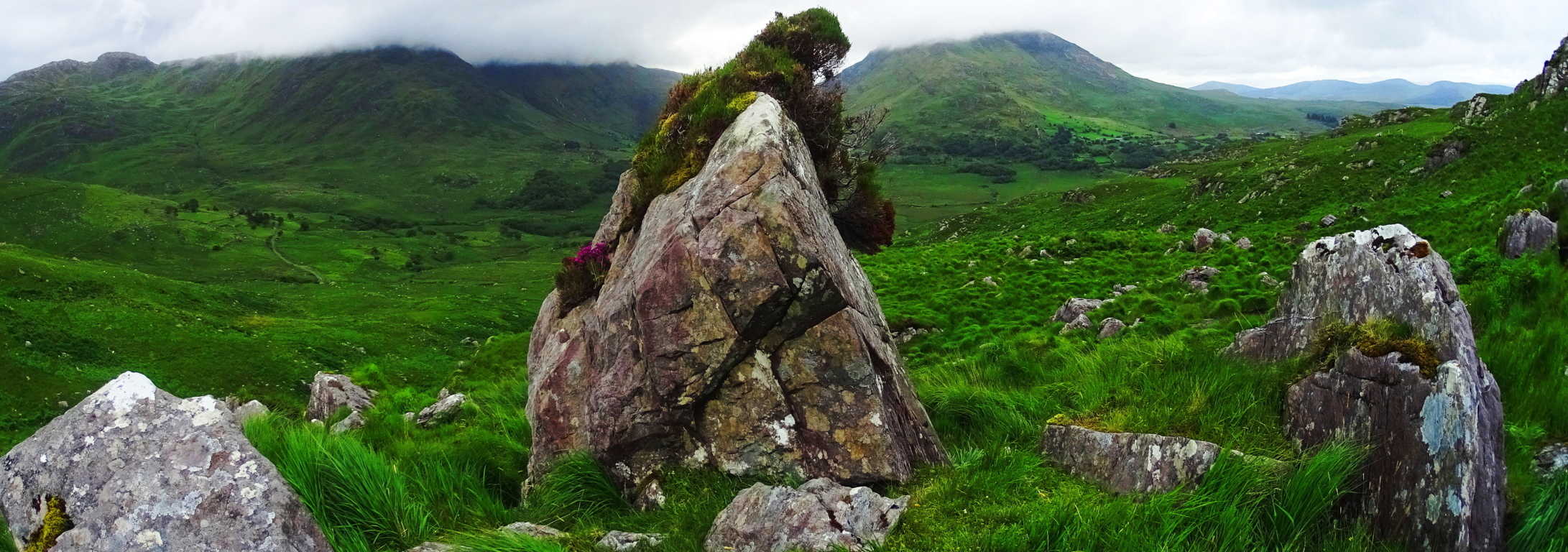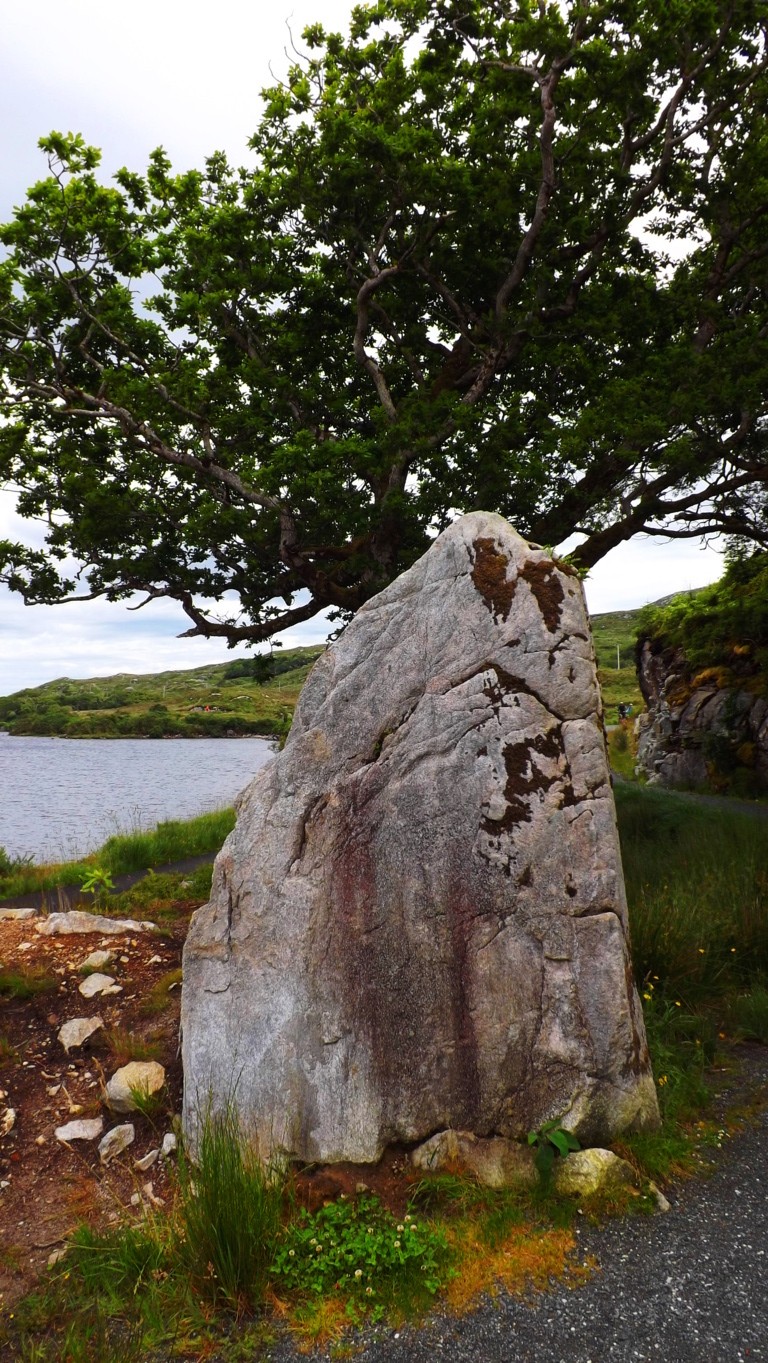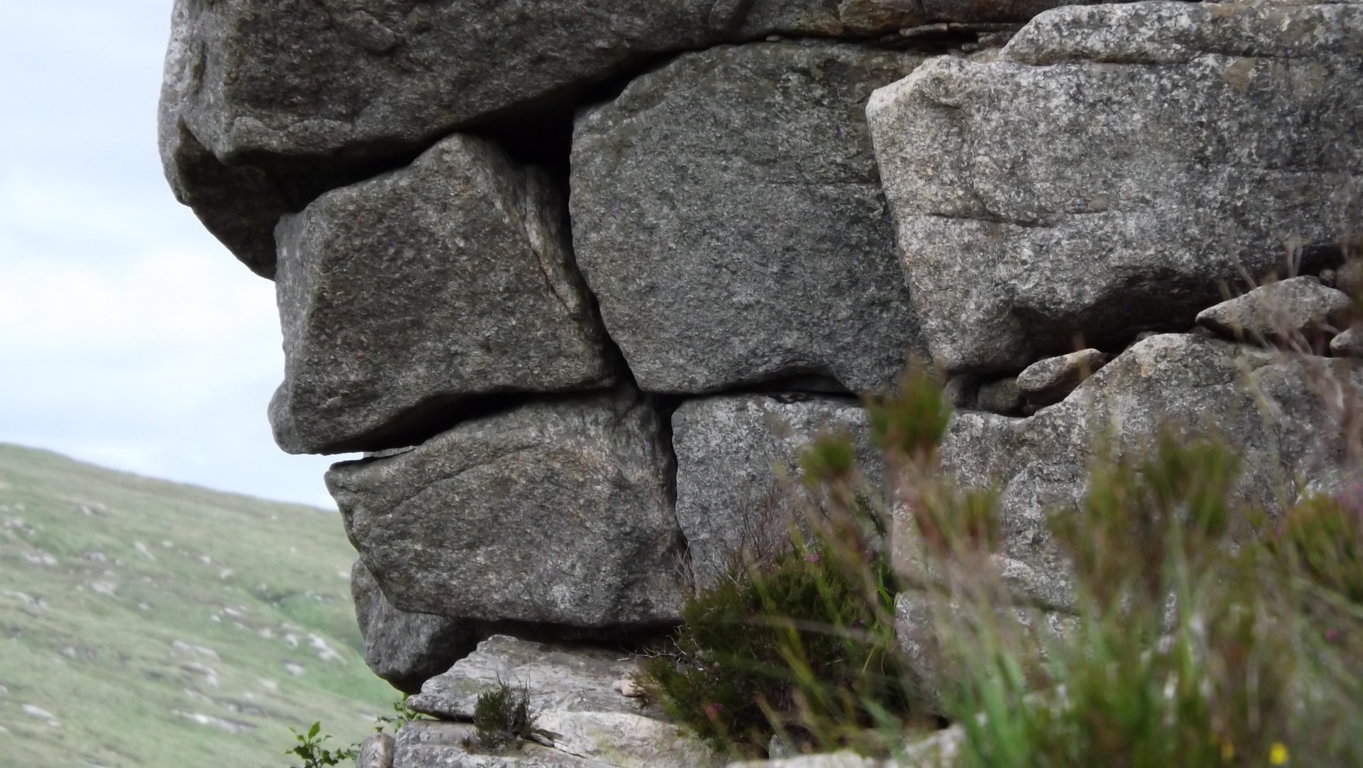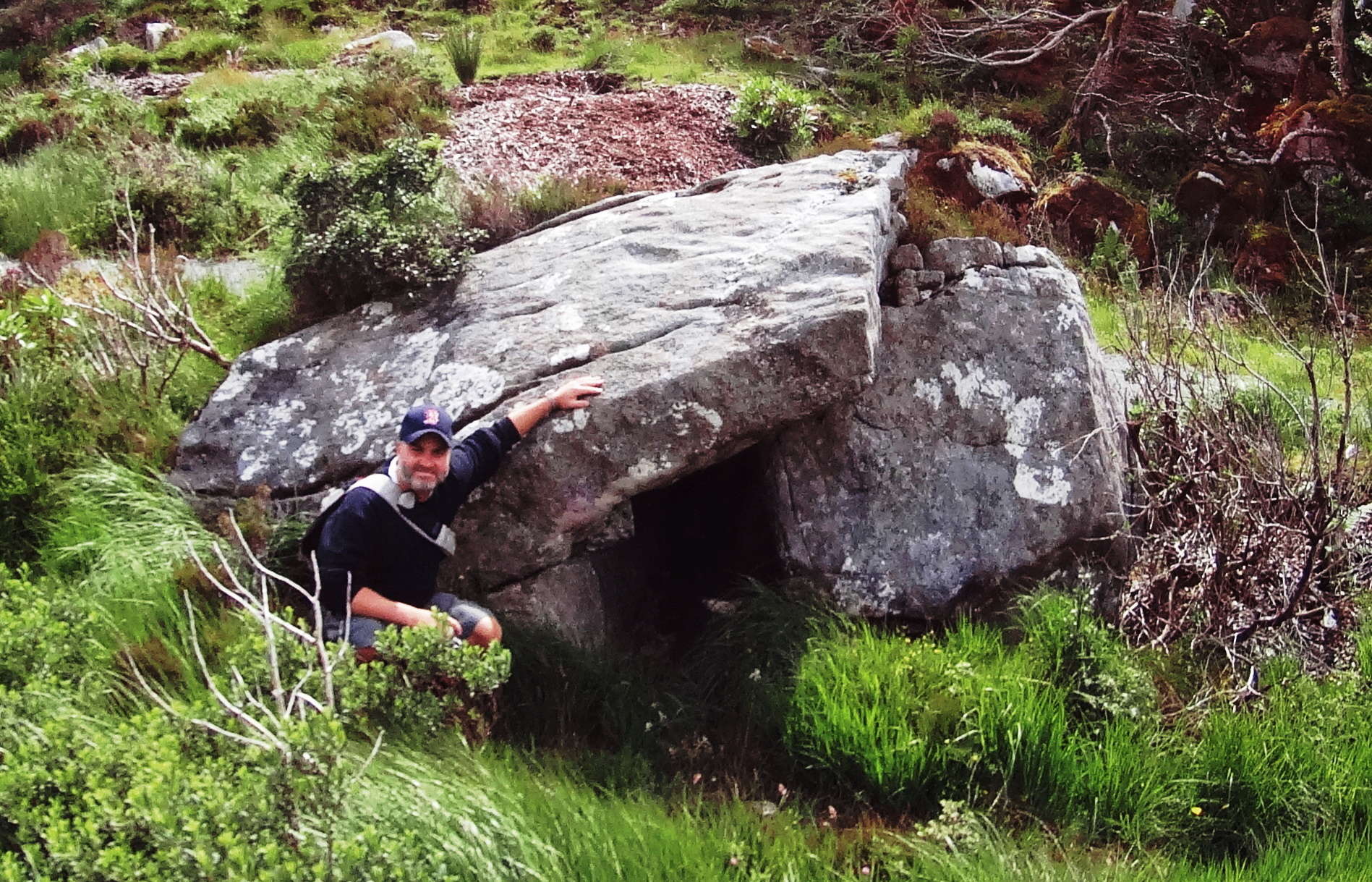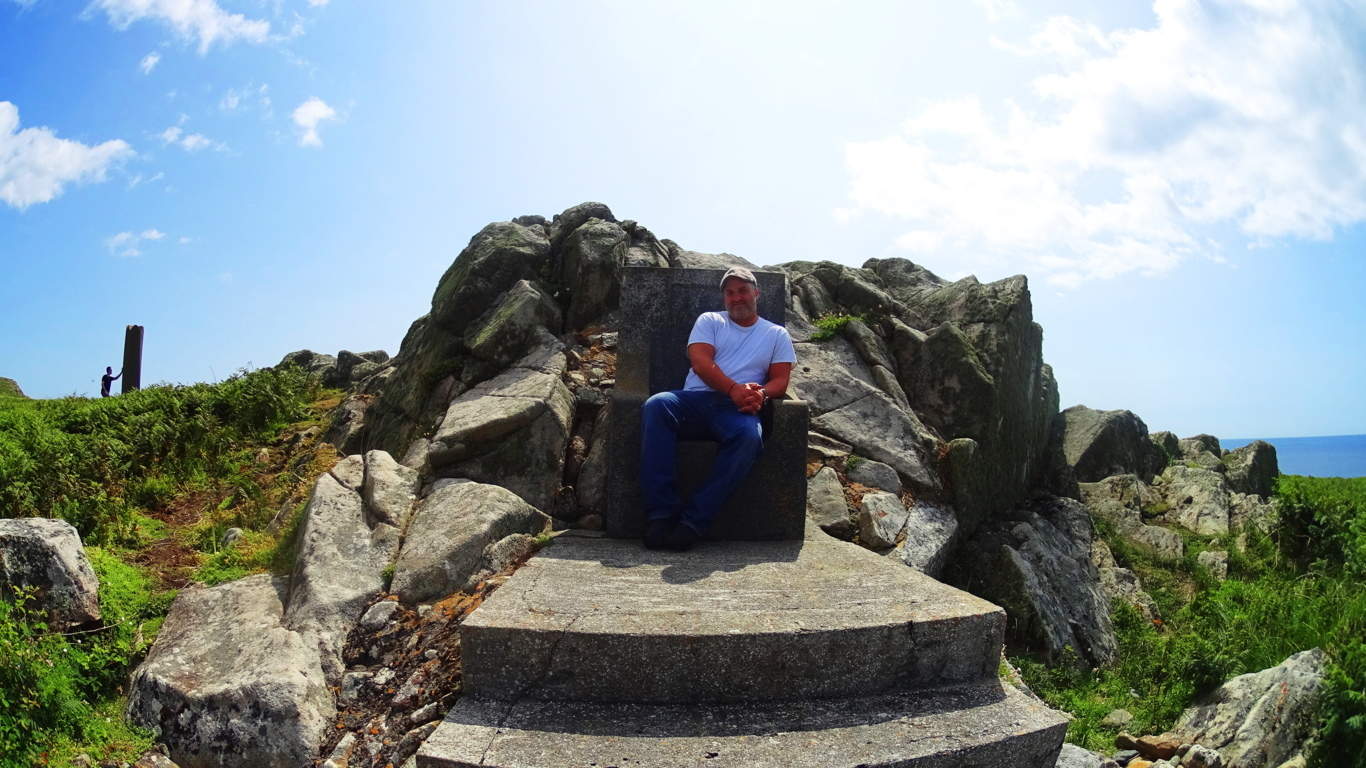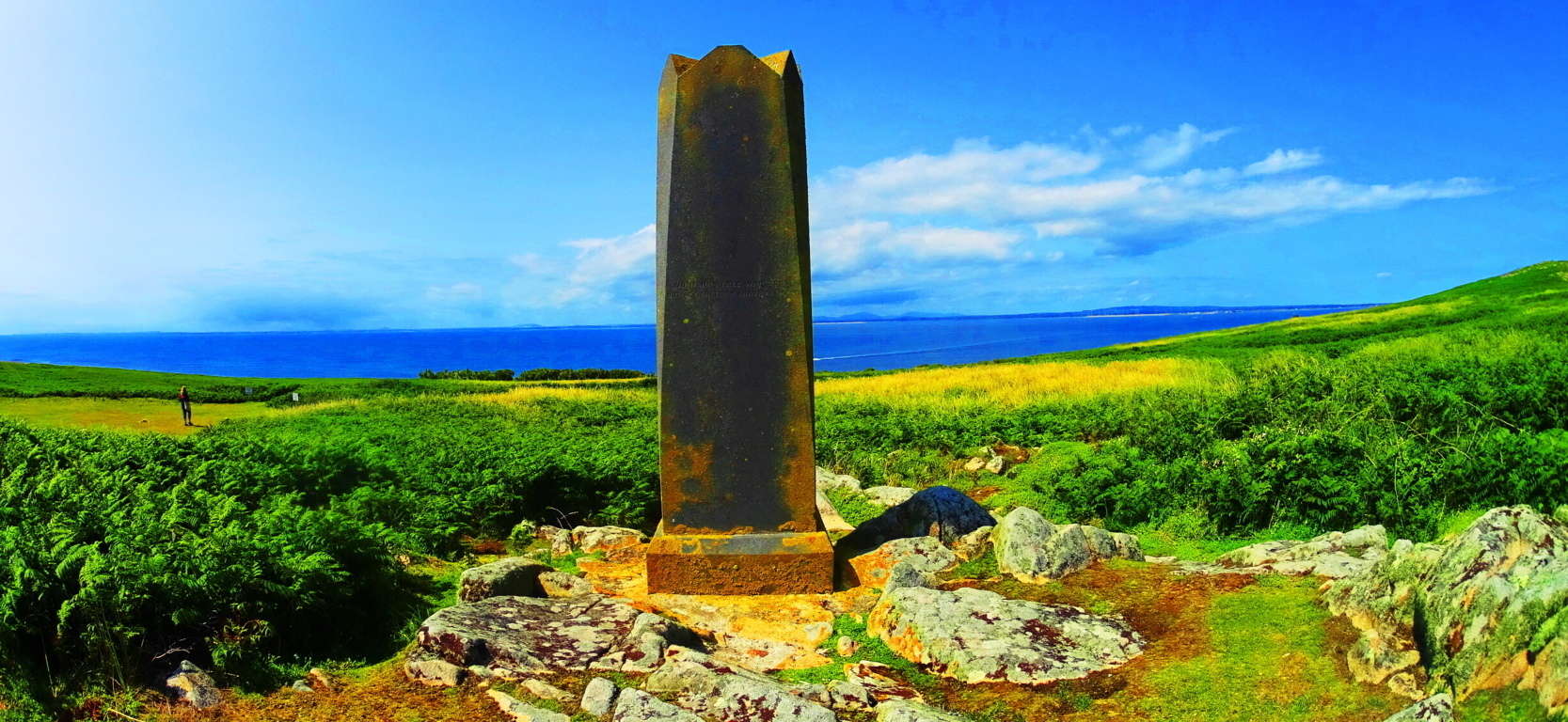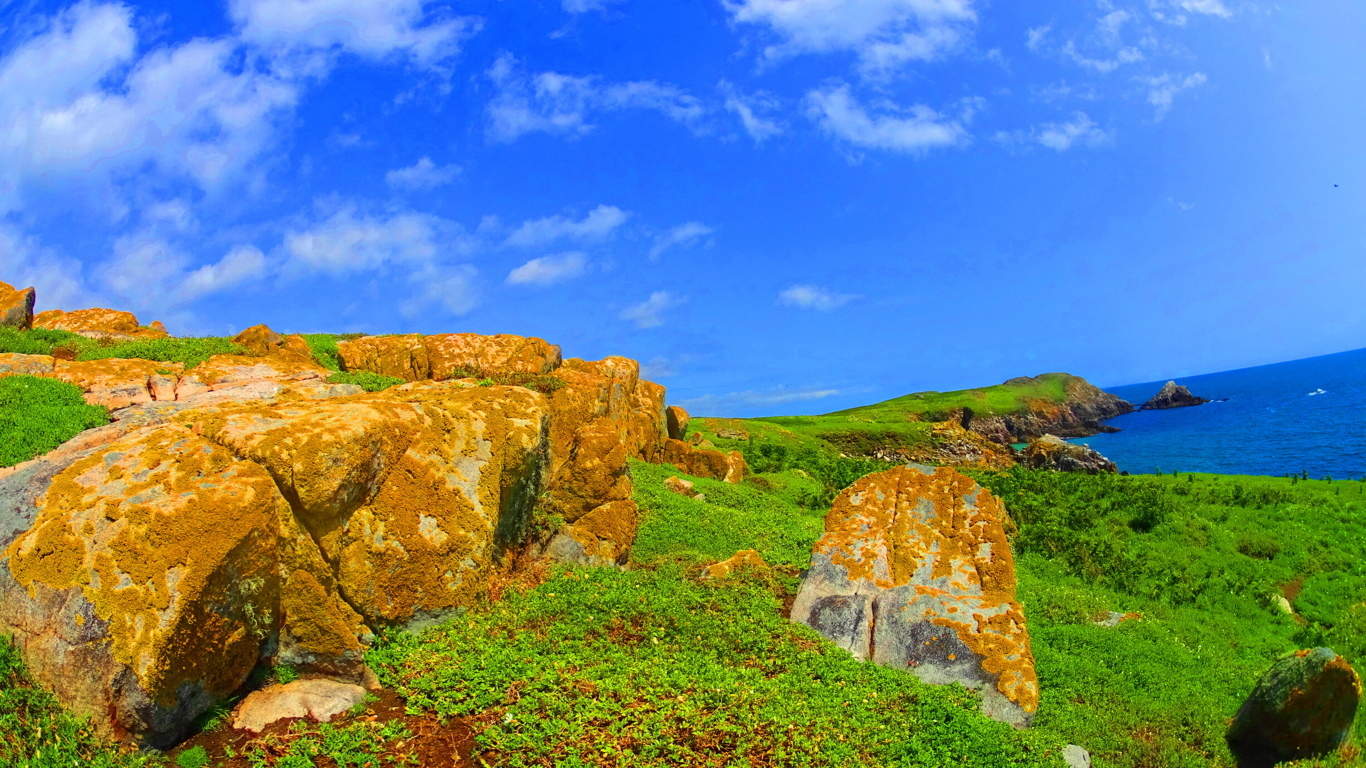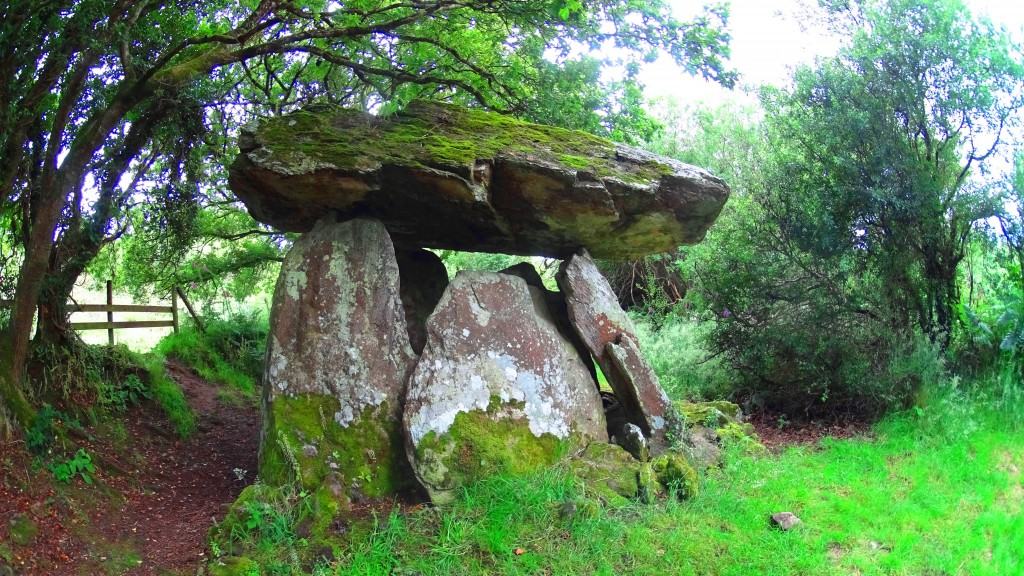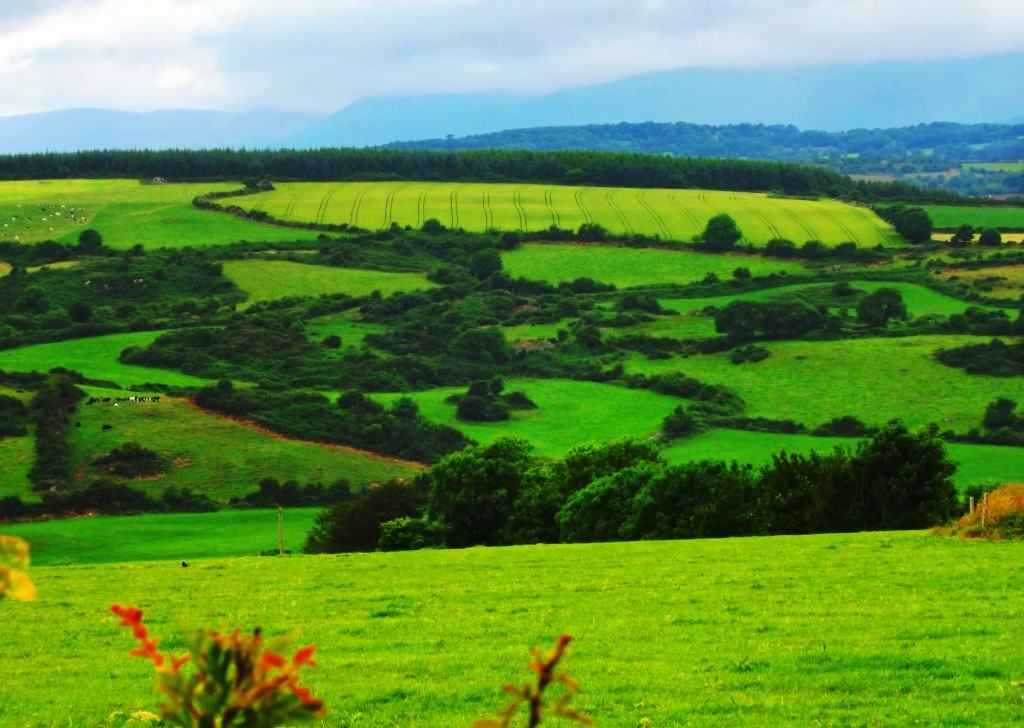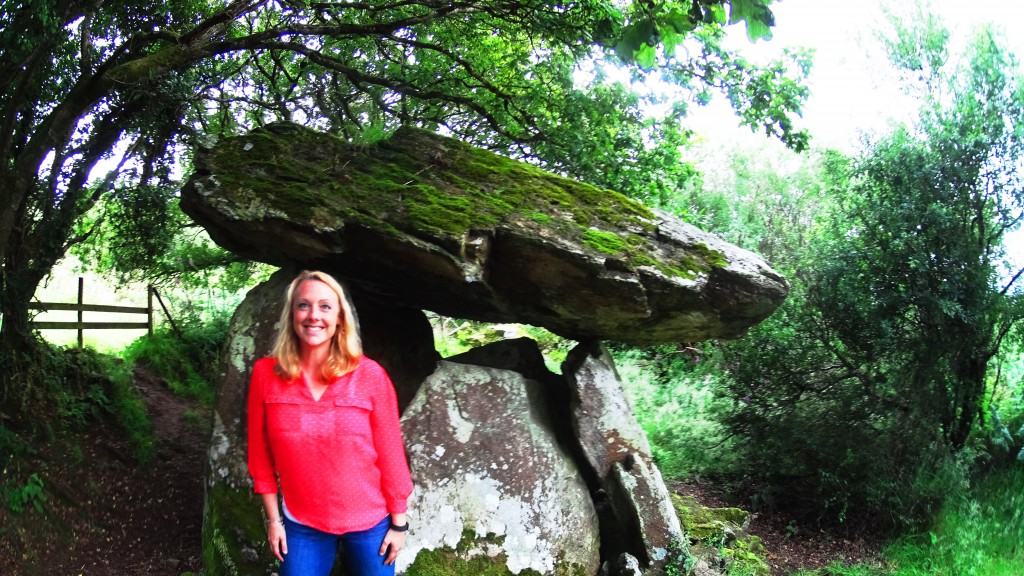Killarney National Park
Note: In the presently modern condition the world finds itself in, filled with expanding urbanization in gentrifying cities across the globe, Killarney stands out as the ultimate Celtic haven, forever resisting through the sheer force of it’s natural beauty. Killarney is a dark Celtic fantasy, draped in jade, mingled with enchanted heights and mountain Gaps, where slanted stones literally hold coded messages of a Celtic era gone by.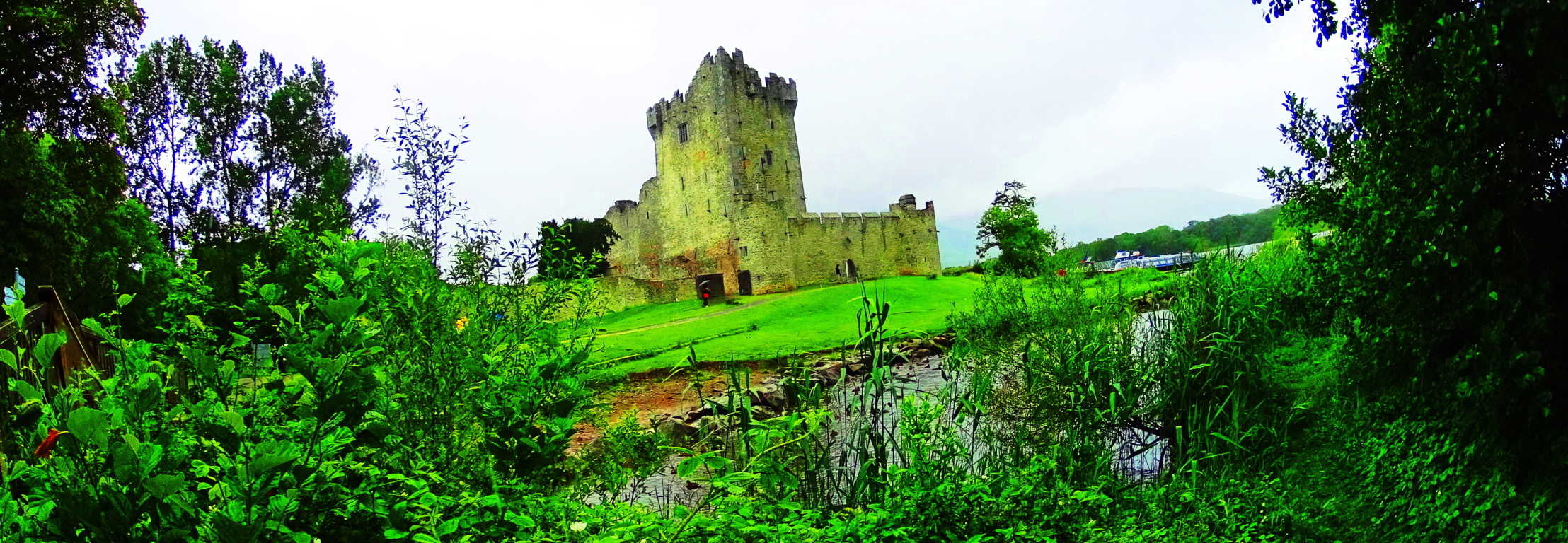 The view from the mountain peaks just south of Moll’s Gap is a hiker’s dream (top image), where you will need to gear-up in steel-tipped boots and a rain resistant windbreaker to truly enjoy the climb. Here the options are endless. Perhaps following a waterfall up a mountain sounds appealing. The angled stones of these long rivulets look to have been cut long ago, in order to influence the flow of the water.
The view from the mountain peaks just south of Moll’s Gap is a hiker’s dream (top image), where you will need to gear-up in steel-tipped boots and a rain resistant windbreaker to truly enjoy the climb. Here the options are endless. Perhaps following a waterfall up a mountain sounds appealing. The angled stones of these long rivulets look to have been cut long ago, in order to influence the flow of the water.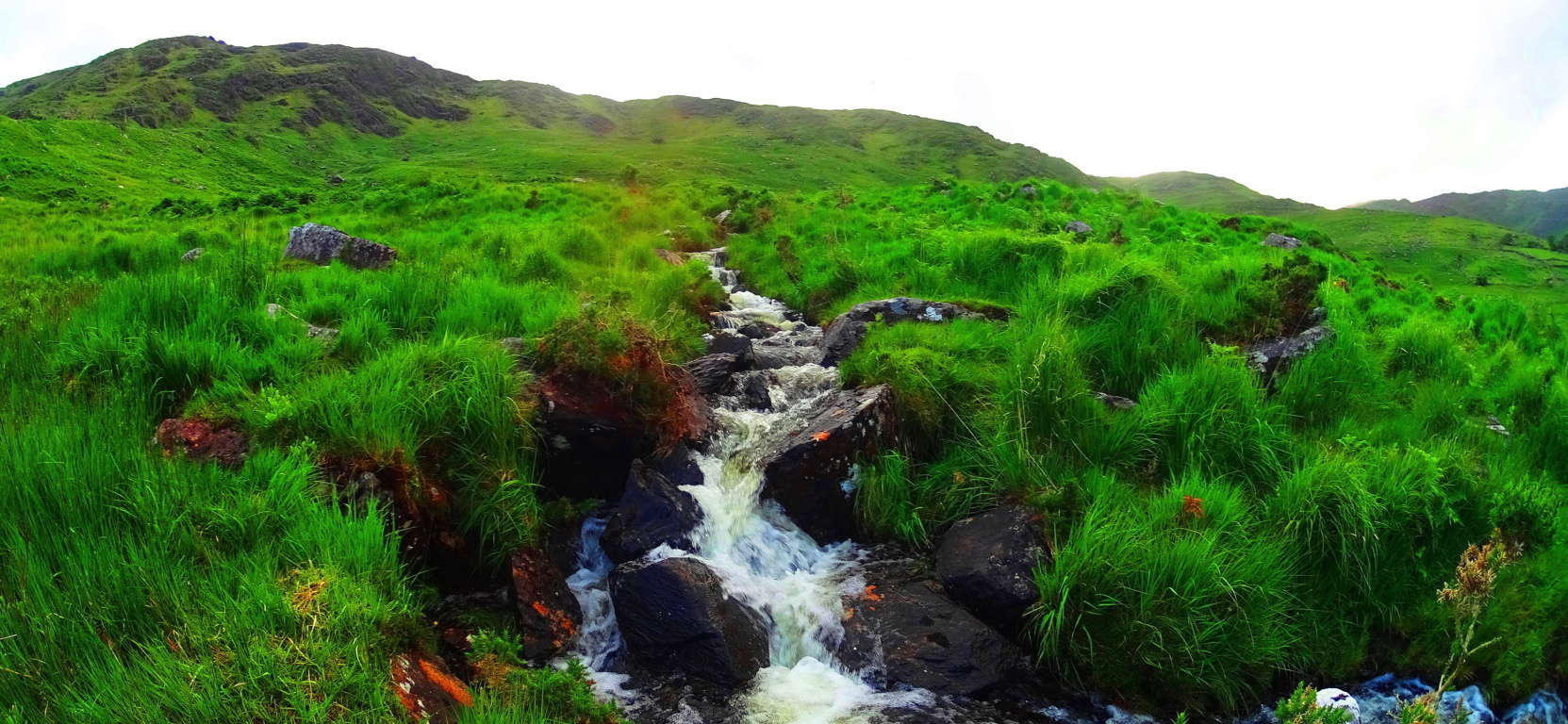 This is similar to many streams in New England and Scotland, where the landscapes appear to have been engineered in antiquity. Just one of hundreds of enchanting and mysterious features Killarney provides. The winding solitary dirt-roads far below have no names, but are known to be a portion of the majestic Ring of Kerry, where mountain biking is ideal.
This is similar to many streams in New England and Scotland, where the landscapes appear to have been engineered in antiquity. Just one of hundreds of enchanting and mysterious features Killarney provides. The winding solitary dirt-roads far below have no names, but are known to be a portion of the majestic Ring of Kerry, where mountain biking is ideal.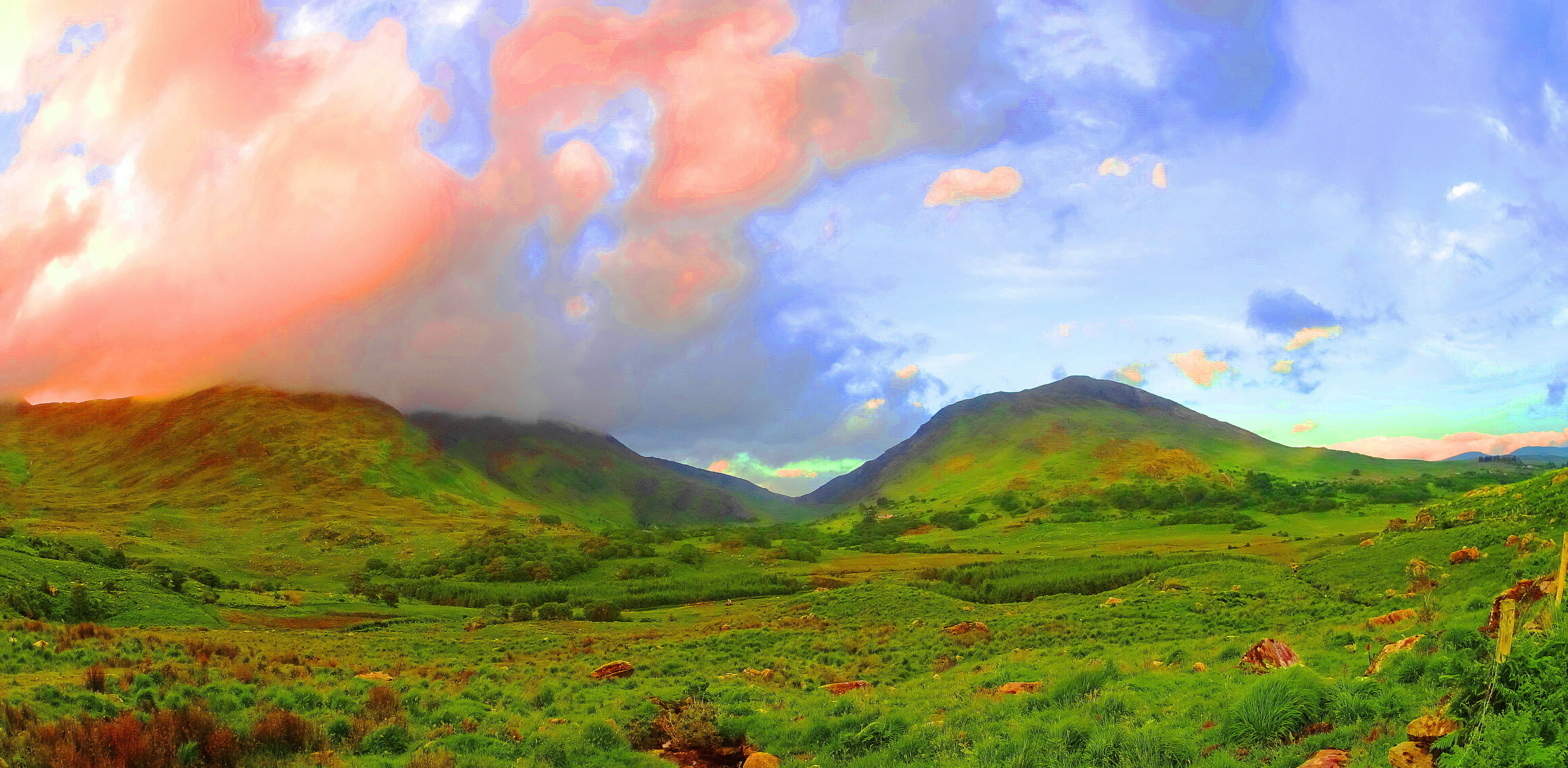 To the north is the crystalline Lake Brinn. Monumental slabs in the heights along the road headed to Moll”s Gap align to this lake, forever memorializing it as one of the best vantages in the world. These squared slabs of solid granite are a half mile above the road, and contain concentric rings that were carved into its face, representing a smooth contemplative perfection that is anything but primitive. These are priceless Celtic symbols.
To the north is the crystalline Lake Brinn. Monumental slabs in the heights along the road headed to Moll”s Gap align to this lake, forever memorializing it as one of the best vantages in the world. These squared slabs of solid granite are a half mile above the road, and contain concentric rings that were carved into its face, representing a smooth contemplative perfection that is anything but primitive. These are priceless Celtic symbols.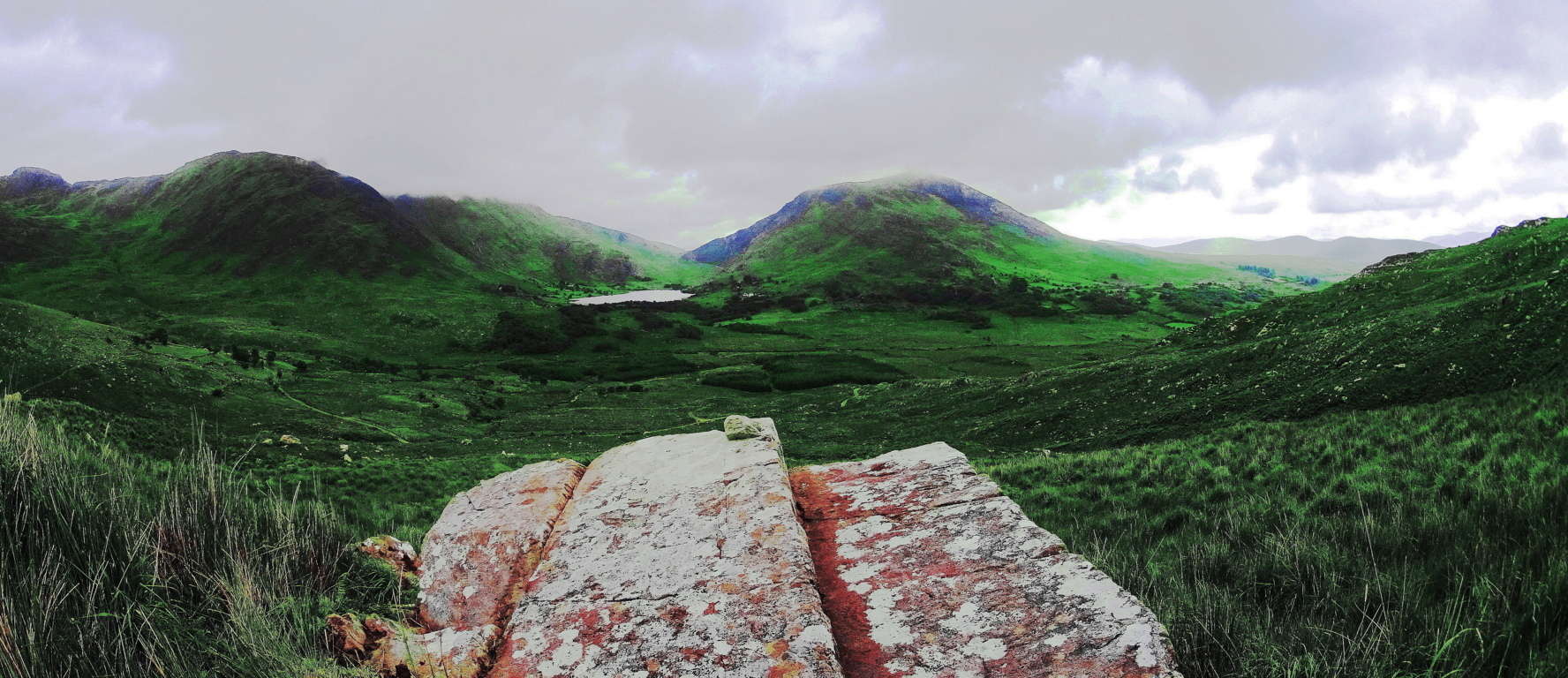 Moments in places where the concentric rings are crafted into the stones take on an almost Zen quality, the places photographers sacrifice to reach.
Moments in places where the concentric rings are crafted into the stones take on an almost Zen quality, the places photographers sacrifice to reach.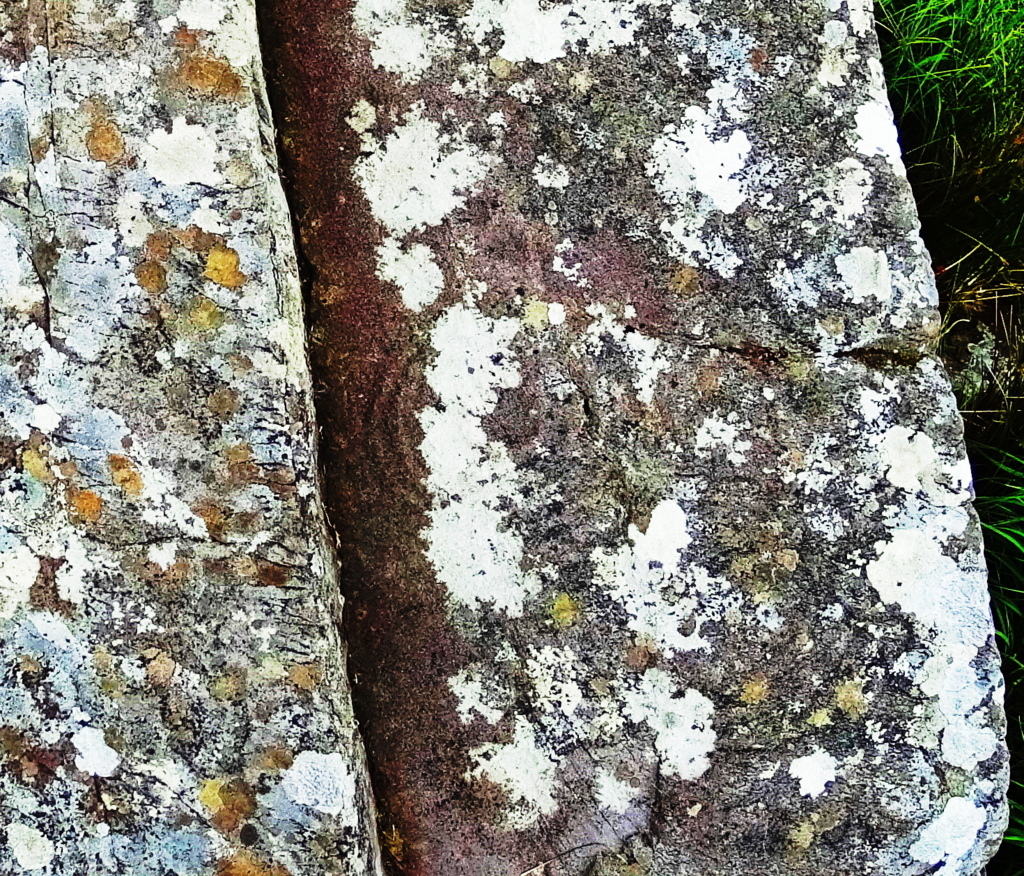 When you find these rare sacred spots you share the beauty of the moment with those who marked it and gave it significance so long ago. You connect all the way to the beginning of Time. Further to the north more features of the landscape emerge, as well as more regulated hiking opportunities. Torc Waterfall is the largest Fall in Killarney.
When you find these rare sacred spots you share the beauty of the moment with those who marked it and gave it significance so long ago. You connect all the way to the beginning of Time. Further to the north more features of the landscape emerge, as well as more regulated hiking opportunities. Torc Waterfall is the largest Fall in Killarney.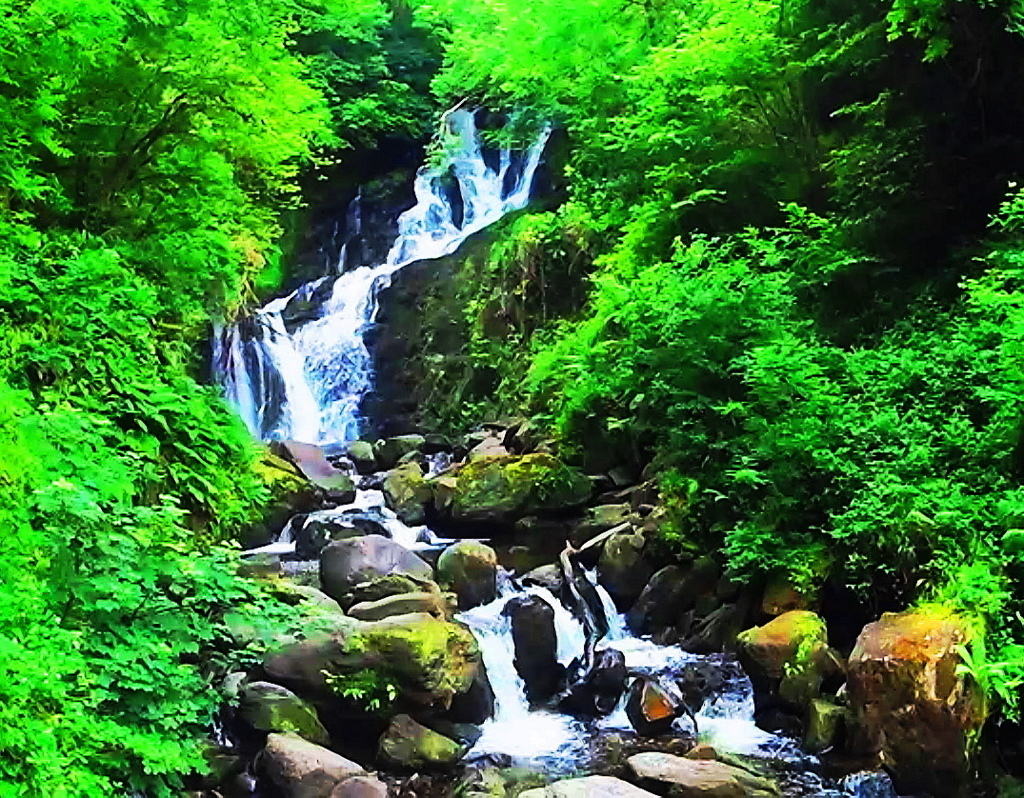 It’s a gorgeous cascade of falling water drifting down over massive boulders. A marked trail runs beside the fall, and up the beautifully forested mountain, for roughly two miles of elevated hiking. Above the Fall is a phenomenal view of Muckross and Leane Lakes, as well Ross Castle further to the north. The castle, built in the 15th century, is the centerpiece for several hiking trails that run to the west, through Ross Woods. There are several loops to choose from that run for miles through Celtic glades that are absolutely enchanting. Some of the rarer trees look to be 500 years in growth or more, seemingly from an entirely different era, and of a type I had never seen before.
It’s a gorgeous cascade of falling water drifting down over massive boulders. A marked trail runs beside the fall, and up the beautifully forested mountain, for roughly two miles of elevated hiking. Above the Fall is a phenomenal view of Muckross and Leane Lakes, as well Ross Castle further to the north. The castle, built in the 15th century, is the centerpiece for several hiking trails that run to the west, through Ross Woods. There are several loops to choose from that run for miles through Celtic glades that are absolutely enchanting. Some of the rarer trees look to be 500 years in growth or more, seemingly from an entirely different era, and of a type I had never seen before.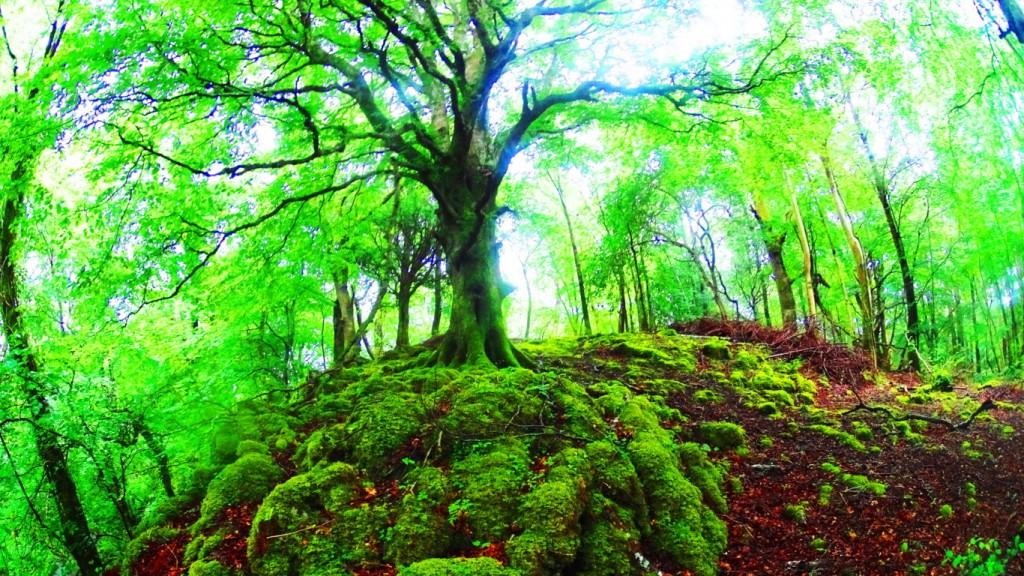 Every winding road and path in Killarney is a potential hiking experience. This is a place where looking over a map at night and planning the following days excursion to various Gaps, trails, and mountains is a true joy. For those who love epic drives, Killarney is a prize winner. By car you can arrive at several of the captivating vistas that Killarney is known for, such as Ladies View (pictured below), the Gap of Dunloe, or dozens of stops along the road to the Black Valley, at the southern edge of the Reserve. In so many of the still pockets of the park a deer may appear, as this delicate fawn did just west of the N71 road. (Bottom Image)
Every winding road and path in Killarney is a potential hiking experience. This is a place where looking over a map at night and planning the following days excursion to various Gaps, trails, and mountains is a true joy. For those who love epic drives, Killarney is a prize winner. By car you can arrive at several of the captivating vistas that Killarney is known for, such as Ladies View (pictured below), the Gap of Dunloe, or dozens of stops along the road to the Black Valley, at the southern edge of the Reserve. In so many of the still pockets of the park a deer may appear, as this delicate fawn did just west of the N71 road. (Bottom Image)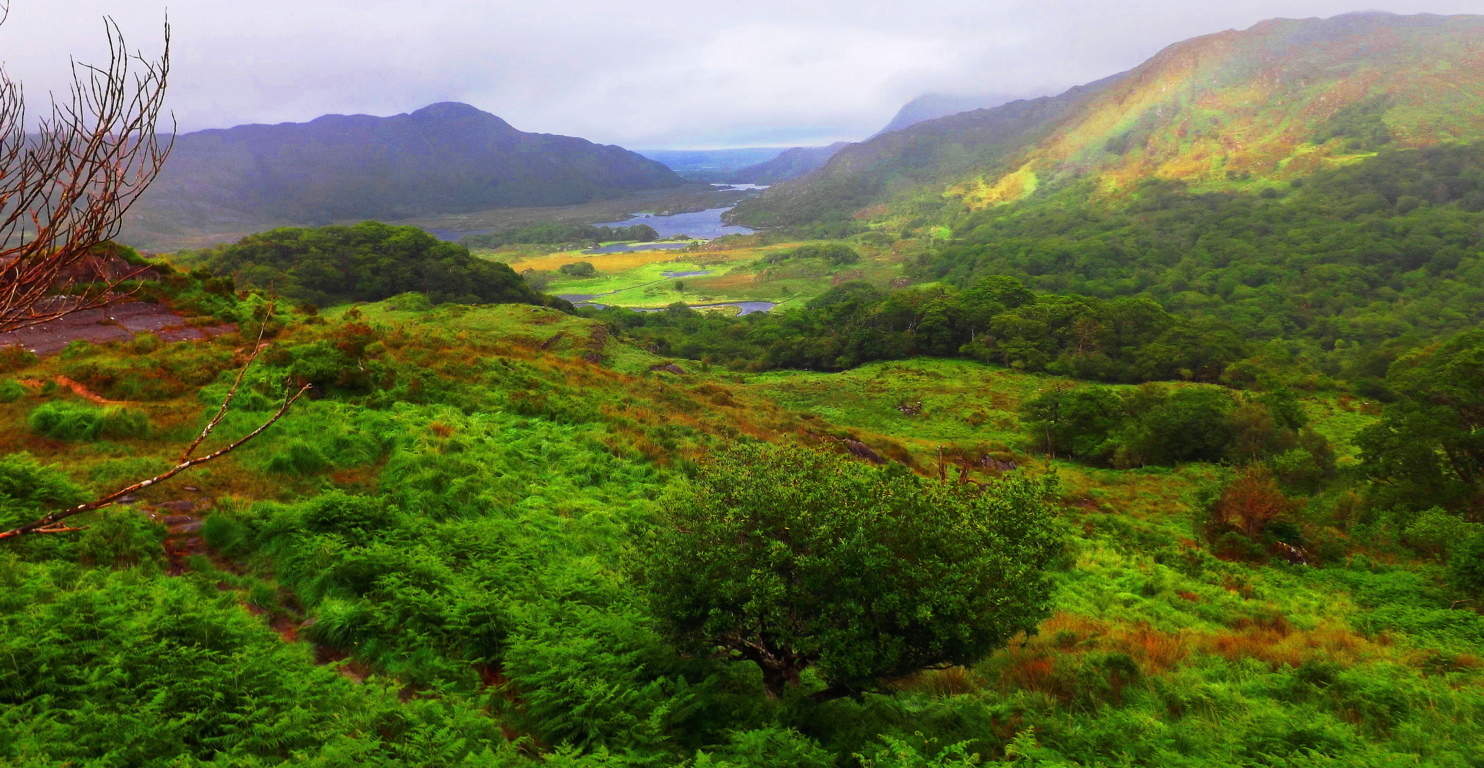 Killarney is a venerable Celtic Valhalla for hikers, mountain bikers, cinematographers, dreamers, and naturalists, looking to tap into the best of what natures elements and energies have to offer. Killarney is not the sunny paradise of flighty escapist entertainments that so many western vacationers understandably seek out, but rather, it is an incredibly deep and often times dark Celtic dimension, full of rustic challenges and blue-grey breezes that end in otherworldly vantages. Just south of Killarney Town on the N71 road that runs through the park is a beautiful Standing Stone. It is yet another example of what megaliths often indicate, silently but strongly, that the area you are about to enter is a true wonderland.
Killarney is a venerable Celtic Valhalla for hikers, mountain bikers, cinematographers, dreamers, and naturalists, looking to tap into the best of what natures elements and energies have to offer. Killarney is not the sunny paradise of flighty escapist entertainments that so many western vacationers understandably seek out, but rather, it is an incredibly deep and often times dark Celtic dimension, full of rustic challenges and blue-grey breezes that end in otherworldly vantages. Just south of Killarney Town on the N71 road that runs through the park is a beautiful Standing Stone. It is yet another example of what megaliths often indicate, silently but strongly, that the area you are about to enter is a true wonderland. 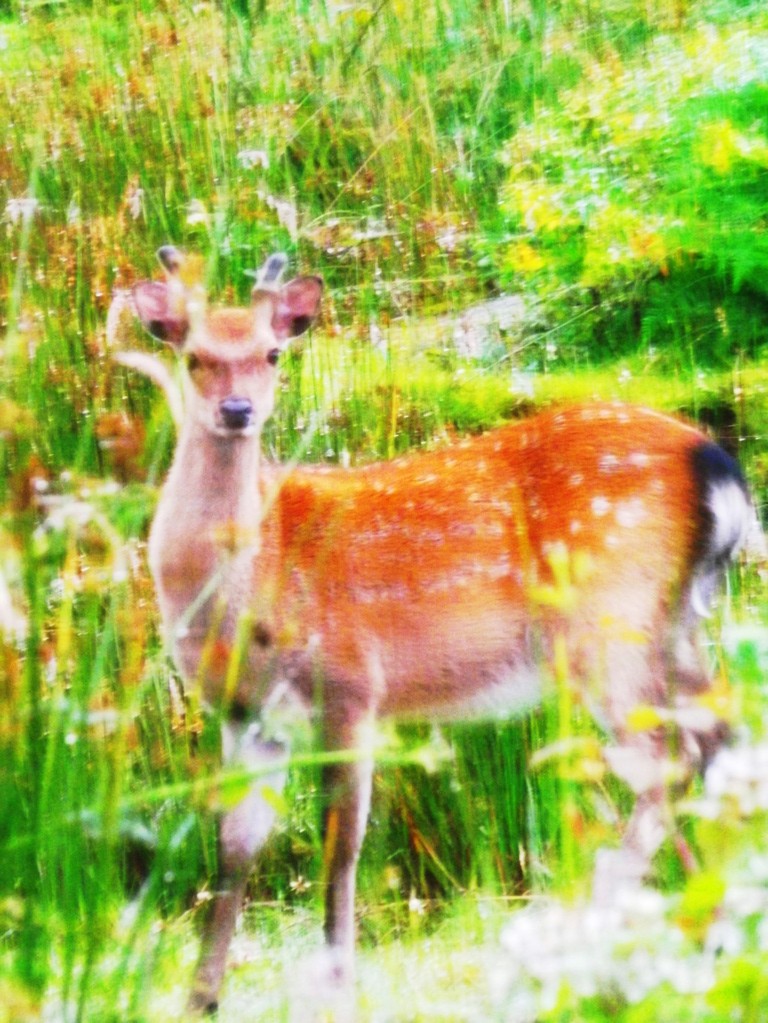
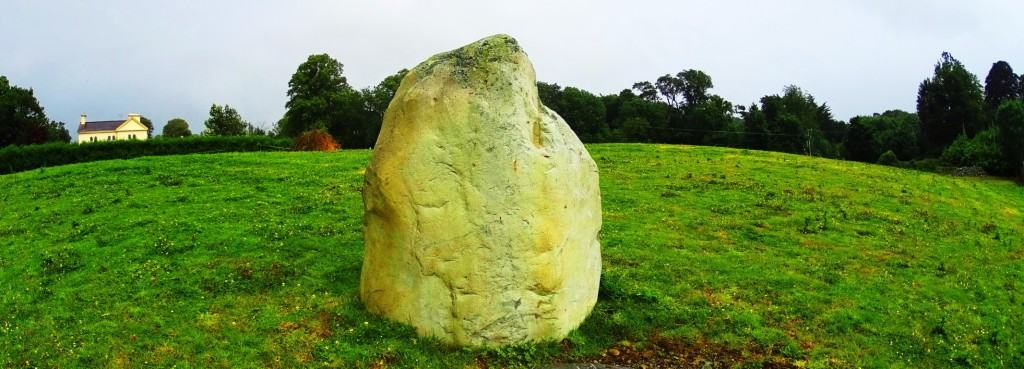
Kinnitty Forest
Elevation: 1,729 feet
Note: If you wanted to find the geographical heart of all Ireland, working your way towards the absolute center of the country, you would inevitably arrive at the beautiful medieval town of Kinnitty. After just a momentary glimpse of this landscape it truly seems as if the countryside itself has become aware of it’s central placement as the green-beating-heart of Ireland, producing a stellar Celtic scene absolutely worthy of this title. Kinnitty Mountain, along with the old forest that runs along it’s lower valley, sits just a half mile to the north-west of tranquil Kinnitty. Hikers can pick up the main trail into this gorgeous scene at one of the prettiest entry points in the world, behind Kinnitty Castle, built in the year 1209. The Castle remains fully functional, with fine dining, an accessible outer courtyard, and stables where horses are kept and trained on the mountain throughout the day. Headed towards the trail it feels as if you’ve walked into an epic fable, or a medieval saga. The trail begins just behind the stables beyond a small trickling stream. A stone-circle will appear on your right, just 20 yards away from the path. It is a picturesque scene, with a barn-house at the edge of the looming Wood.
Headed towards the trail it feels as if you’ve walked into an epic fable, or a medieval saga. The trail begins just behind the stables beyond a small trickling stream. A stone-circle will appear on your right, just 20 yards away from the path. It is a picturesque scene, with a barn-house at the edge of the looming Wood. Unfortunately, the stone circle is not authentic, and was created by a previous owner of the estate some years ago, but it’s aesthetic effect is certainly complimentary.
Unfortunately, the stone circle is not authentic, and was created by a previous owner of the estate some years ago, but it’s aesthetic effect is certainly complimentary.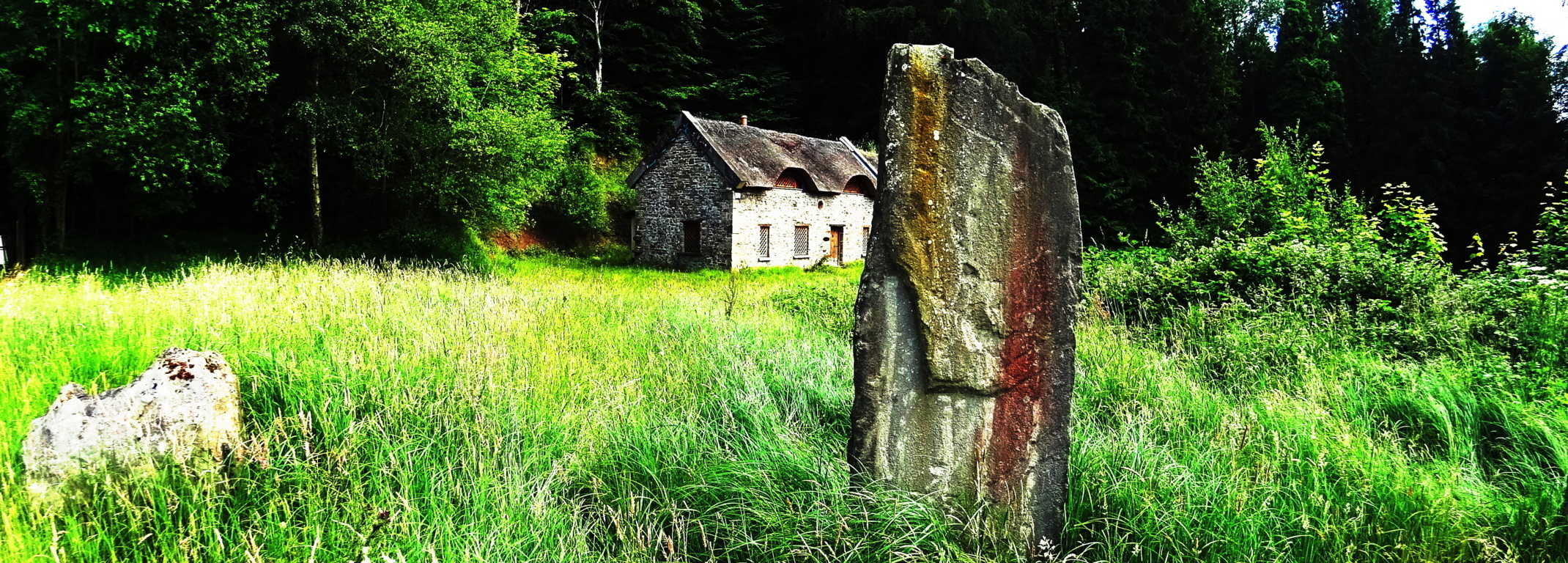 Continuing past the sign that reads ‘Kinnitty Forest’ just beyond the circle, the trail begins to climb. With the British incursion of Ireland beginning in the 12th century, the British Royals illustrious Navy and it’s ships, as well the occupying manors and hamlets abroad, which were built in support of the Crowns `expansion’, deforested Ireland almost entirely.
Continuing past the sign that reads ‘Kinnitty Forest’ just beyond the circle, the trail begins to climb. With the British incursion of Ireland beginning in the 12th century, the British Royals illustrious Navy and it’s ships, as well the occupying manors and hamlets abroad, which were built in support of the Crowns `expansion’, deforested Ireland almost entirely. The upside to to this is that the remaining trees that make up Kinnitty Forest are like the regal survivors of a once beautiful era, refusing to vanish.
The upside to to this is that the remaining trees that make up Kinnitty Forest are like the regal survivors of a once beautiful era, refusing to vanish.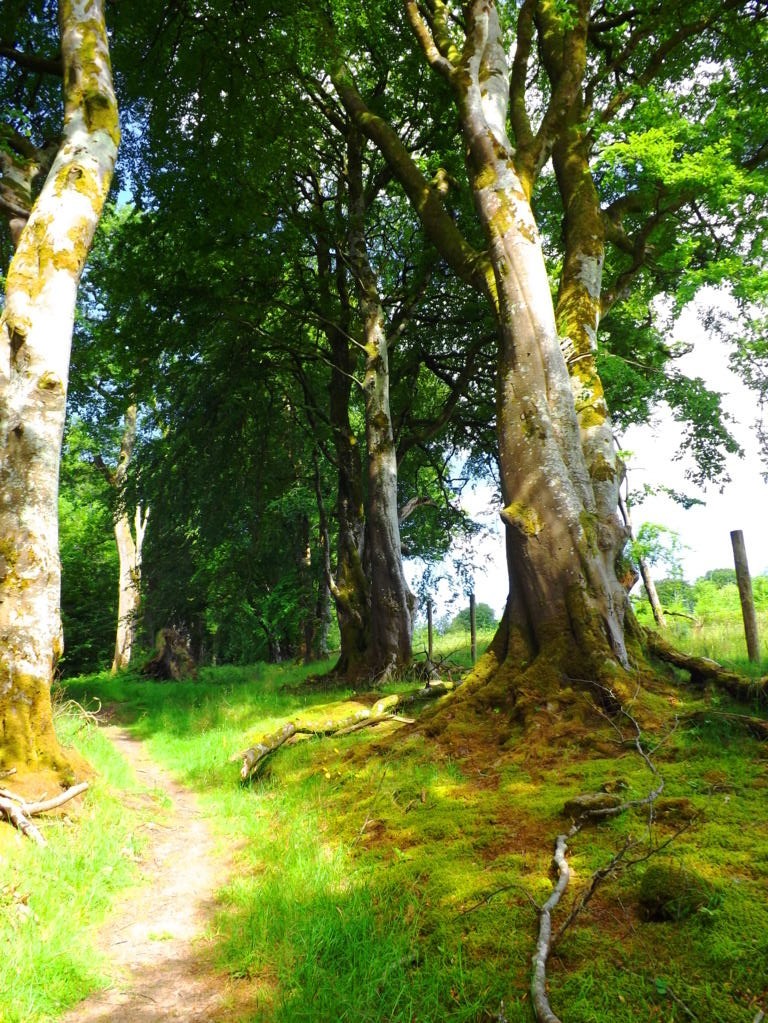 They loom over the trail protectively with a beautiful bright milky color that shines against the glades. Continuing above the tree line, the trail begins to circle the Mountain, just to the right. In the open air and Sun, Fairy Foxgloves and Clovers appear in bright clusters. If you look down, at an elevation of roughly 1600 feet, in the most landlocked trail in all of Ireland, you will discover Seashells mingled with the stones!.
They loom over the trail protectively with a beautiful bright milky color that shines against the glades. Continuing above the tree line, the trail begins to circle the Mountain, just to the right. In the open air and Sun, Fairy Foxgloves and Clovers appear in bright clusters. If you look down, at an elevation of roughly 1600 feet, in the most landlocked trail in all of Ireland, you will discover Seashells mingled with the stones!.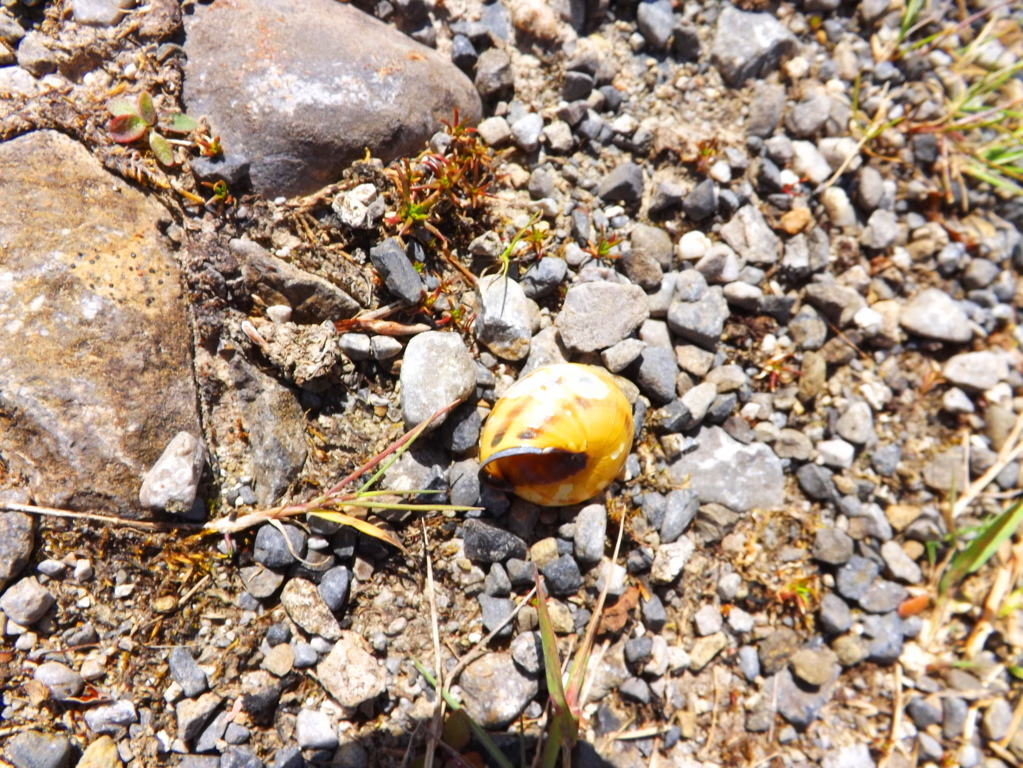 How these shells came to rest at the top of a mountain is just one of many wonderful discussions you might have while strolling through this fantastic Celtic scene. The loop continues for roughly 4.5 miles before returning to the Castle grounds. There are alternate trails that continue several miles to the north-east, into the Sleive Bloom Mountain Range, if you wish to continue the experience. Kinnitty Forest trail is truly the sacred heart of all Ireland, and in every possible way. It is a priceless glimpse into the way things once were, of a quieter more peaceful time that still lingers in the hills of this Celtic place. It is my hope that whoever reads this review, and takes it to heart, will one day experience it for themselves.
How these shells came to rest at the top of a mountain is just one of many wonderful discussions you might have while strolling through this fantastic Celtic scene. The loop continues for roughly 4.5 miles before returning to the Castle grounds. There are alternate trails that continue several miles to the north-east, into the Sleive Bloom Mountain Range, if you wish to continue the experience. Kinnitty Forest trail is truly the sacred heart of all Ireland, and in every possible way. It is a priceless glimpse into the way things once were, of a quieter more peaceful time that still lingers in the hills of this Celtic place. It is my hope that whoever reads this review, and takes it to heart, will one day experience it for themselves.
Cavan Burren National Park (Part 1: Celtic Altar)
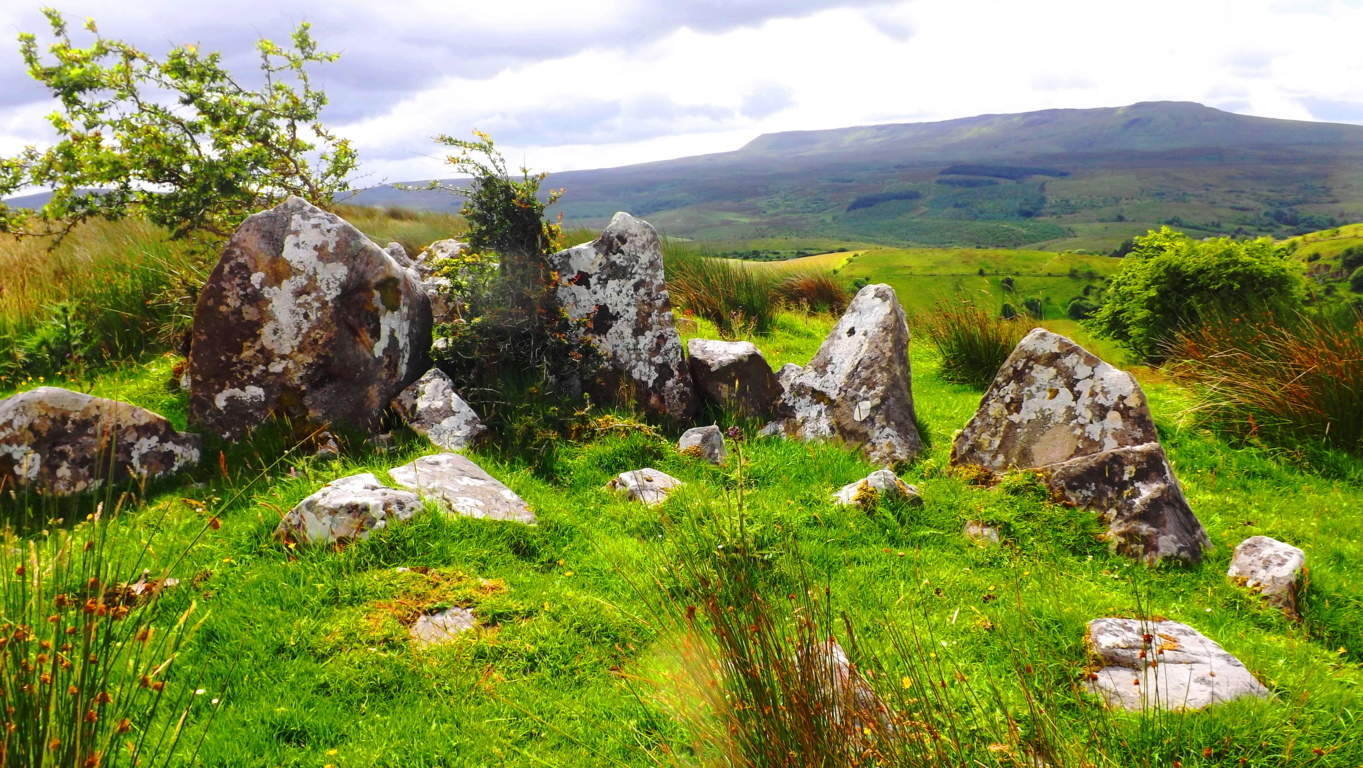 Location: Blacklion/County Cavan Ireland/Cavan Burren National Park
Location: Blacklion/County Cavan Ireland/Cavan Burren National Park
Note: If the quintessential Celtic ‘dreamscape’ is what you are hoping to find in a hiking experience, Cavan Burren National Park is the place for you.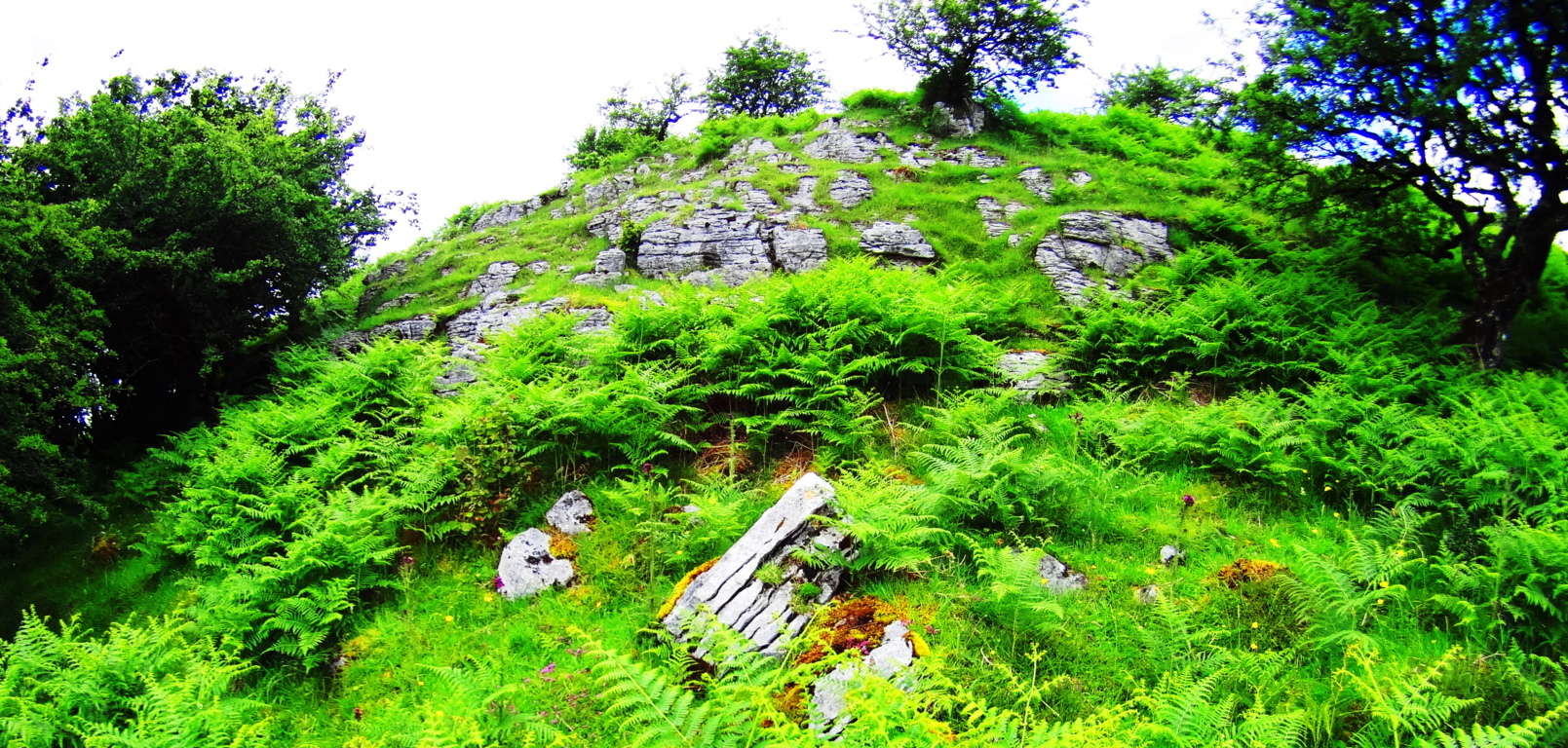 This pristine pre-history landscape is sacred on every possible level, with roughly ten square miles of Celtic wildlife preserve. Embedded in the surreal panoramic vistas surrounding Cuilcagh Mountain, on which the park is mainly canvased, are priceless 5000 year old Wedge Tombs, Alters, Dolmens, and megaliths. A fantastic trail runs from the main entrance/visitors-center of the park to beautiful anthropological sites. The area is absolutely worthy of several specified reviews for each of the sites along this main route, but the real wonder of the region, and perhaps it’s most establishing distinction as a truly Celtic reserve for both exquisitely rare natural fauna and neolithic cultural gems, is that the off trail hiking reveals supremely beautiful works of ancient stone engineering as well. I discovered this incredible alter, featured in the title image above, by interpreting the lay of the engineered stones expressed over the landscape. Postmodern anthropologists have taken a dismissively poor perspective on what they have lazily identified as “farmers walls” looping over the hillsides. These “farmers walls” are not “walls” at all; functionally they do not limit the movements of grazing flocks in any way. Herds can simply walk over these stones if they so choose, so by literal definition, it is not a wall. The function of these special stones that look to our modern eyes as “walling” is actually a type of primitive ‘cable system’ that connects each sacred alter, from one to the next.
This pristine pre-history landscape is sacred on every possible level, with roughly ten square miles of Celtic wildlife preserve. Embedded in the surreal panoramic vistas surrounding Cuilcagh Mountain, on which the park is mainly canvased, are priceless 5000 year old Wedge Tombs, Alters, Dolmens, and megaliths. A fantastic trail runs from the main entrance/visitors-center of the park to beautiful anthropological sites. The area is absolutely worthy of several specified reviews for each of the sites along this main route, but the real wonder of the region, and perhaps it’s most establishing distinction as a truly Celtic reserve for both exquisitely rare natural fauna and neolithic cultural gems, is that the off trail hiking reveals supremely beautiful works of ancient stone engineering as well. I discovered this incredible alter, featured in the title image above, by interpreting the lay of the engineered stones expressed over the landscape. Postmodern anthropologists have taken a dismissively poor perspective on what they have lazily identified as “farmers walls” looping over the hillsides. These “farmers walls” are not “walls” at all; functionally they do not limit the movements of grazing flocks in any way. Herds can simply walk over these stones if they so choose, so by literal definition, it is not a wall. The function of these special stones that look to our modern eyes as “walling” is actually a type of primitive ‘cable system’ that connects each sacred alter, from one to the next. These stone linings are like the wire that runs between a battery’s charge points, to the base-tip of a light bulb, passing energy from one end-point of energy to the next. I found this alter by following the lined stones running north west off the main trail.
These stone linings are like the wire that runs between a battery’s charge points, to the base-tip of a light bulb, passing energy from one end-point of energy to the next. I found this alter by following the lined stones running north west off the main trail.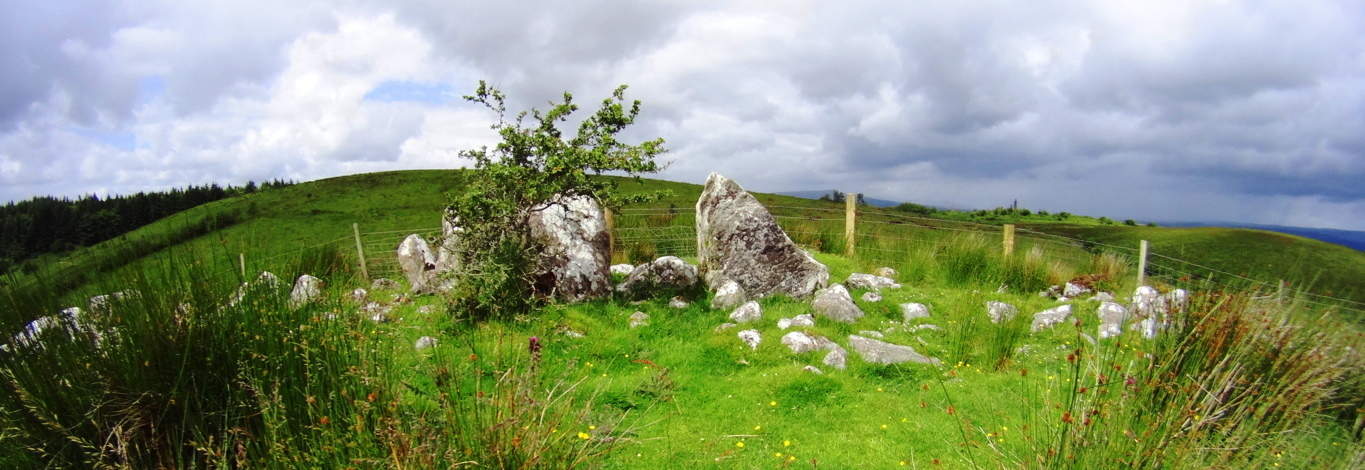 My educated guess was therefore to follow the lined stones I observed to see what special feature it was connected to. I arrived at this incredible Celtic alter wonderfully positioned at the next hilltop, approximately 1.5 miles northwest of the main trails (Top Image).
My educated guess was therefore to follow the lined stones I observed to see what special feature it was connected to. I arrived at this incredible Celtic alter wonderfully positioned at the next hilltop, approximately 1.5 miles northwest of the main trails (Top Image).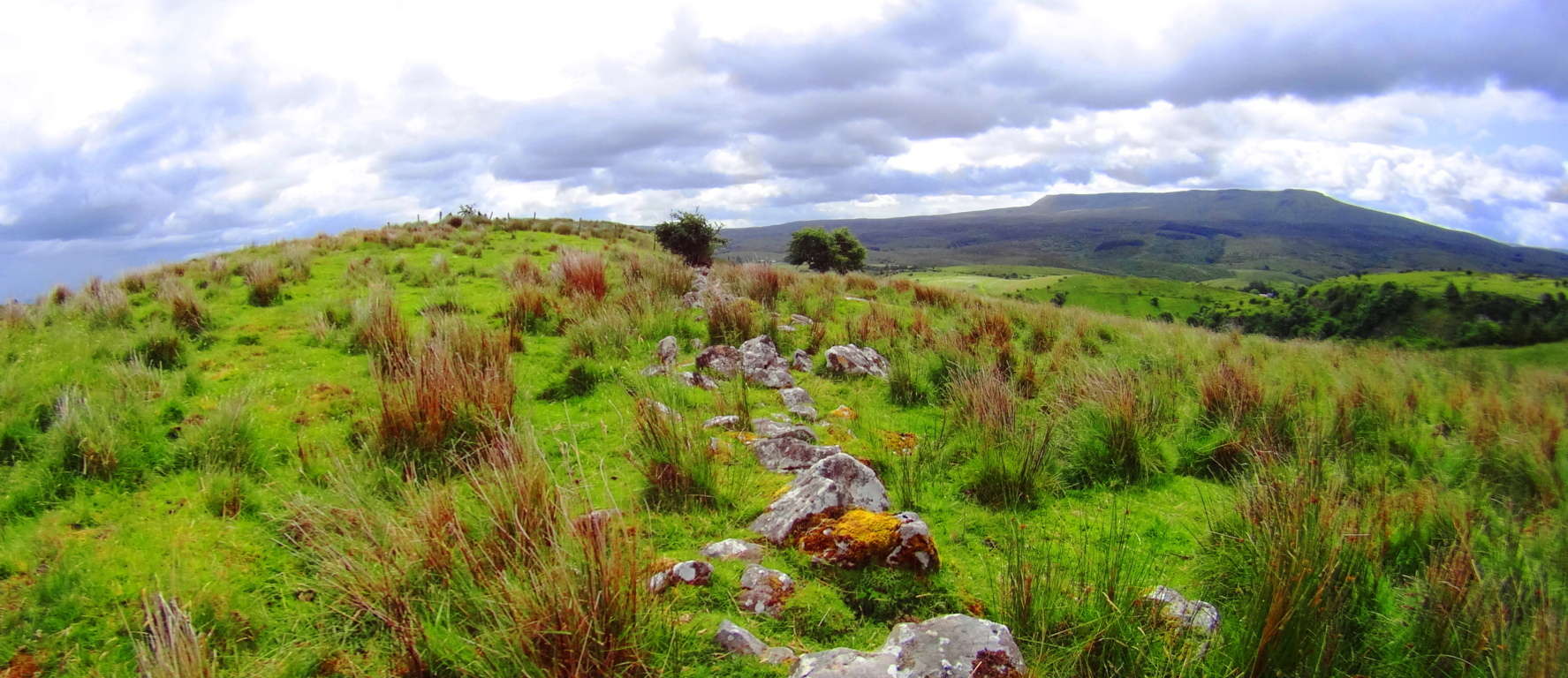 Here again was another moment where my firm belief in the premise of engineered landscapes was vindicated. The earliest Celtic cultures attempted to harness and designate the transfer of energy in the landscape with stones that absorb the energy from the sun and connect the alters sitting strategically at the top the hills. These lined stones funneled energy from peak to peak, alter to alter. Most modern anthropologists fall victim to assuming that a ‘defined sacred space’ requires a specific ‘central temple’ that celebrates the area in a basically singular declaration. What they refuse to consider is that an even higher expression of the sacredness of the landscape is of course to utilize it while celebrating it, making the entire area a type of living, functional temple which connects each elevated corner. This engineering is also present in the mountains and forests of New England. I encourage hikers to prepare appropriate gear for deeply experiencing the landscape, for trekking into wilder corners of the reserves. If you follow the stone-linings of ancient Celtic zones to areas away from the designated trail, you will soon find that the premise of engineered landscapes is absolutely real. Aside form this, the natural beauty of the area is stellar. To deeply experience any ancient landscape equip yourself with cinema-capable cameras and capture your trek.
Here again was another moment where my firm belief in the premise of engineered landscapes was vindicated. The earliest Celtic cultures attempted to harness and designate the transfer of energy in the landscape with stones that absorb the energy from the sun and connect the alters sitting strategically at the top the hills. These lined stones funneled energy from peak to peak, alter to alter. Most modern anthropologists fall victim to assuming that a ‘defined sacred space’ requires a specific ‘central temple’ that celebrates the area in a basically singular declaration. What they refuse to consider is that an even higher expression of the sacredness of the landscape is of course to utilize it while celebrating it, making the entire area a type of living, functional temple which connects each elevated corner. This engineering is also present in the mountains and forests of New England. I encourage hikers to prepare appropriate gear for deeply experiencing the landscape, for trekking into wilder corners of the reserves. If you follow the stone-linings of ancient Celtic zones to areas away from the designated trail, you will soon find that the premise of engineered landscapes is absolutely real. Aside form this, the natural beauty of the area is stellar. To deeply experience any ancient landscape equip yourself with cinema-capable cameras and capture your trek.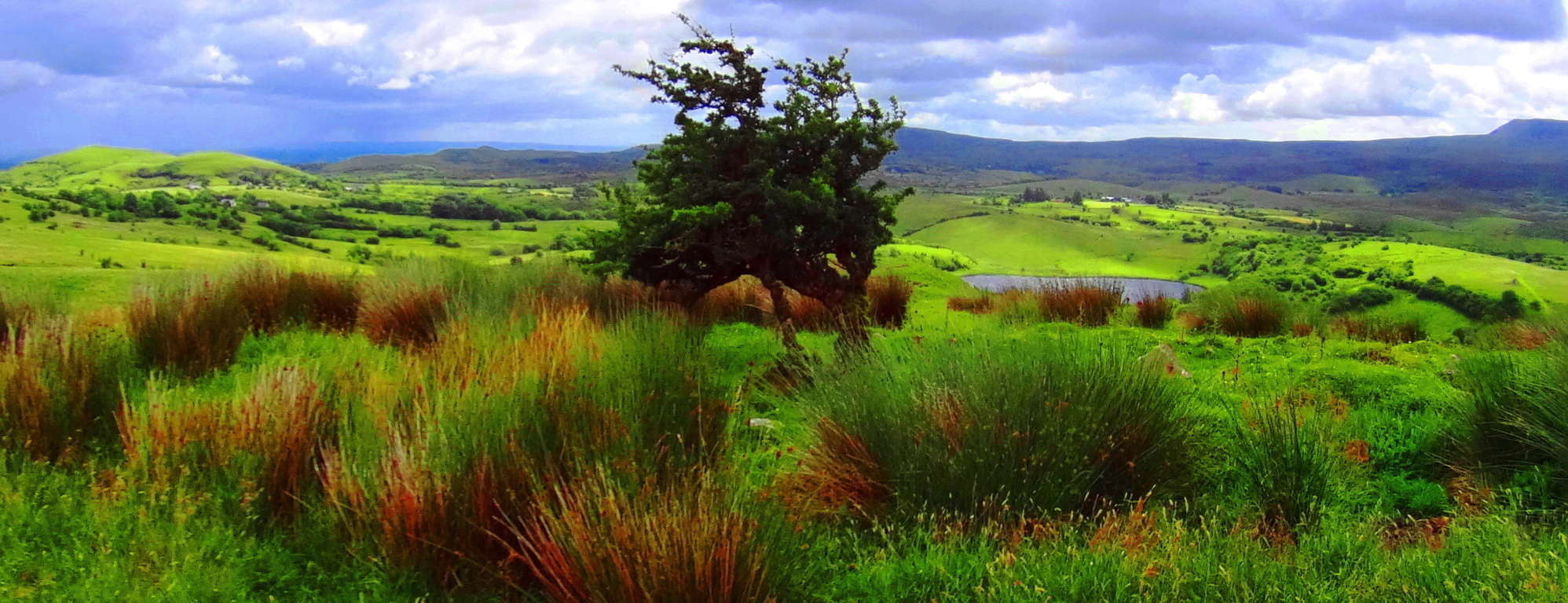 Cavan Burren National Park is a portal into the primordial era of the earths most fantastic expressions, with priceless anthropological expressions of engineering from the first culture on earth. Seek, and find it out for yourself.
Cavan Burren National Park is a portal into the primordial era of the earths most fantastic expressions, with priceless anthropological expressions of engineering from the first culture on earth. Seek, and find it out for yourself.
Tollymore Forest/Mourne Mountains
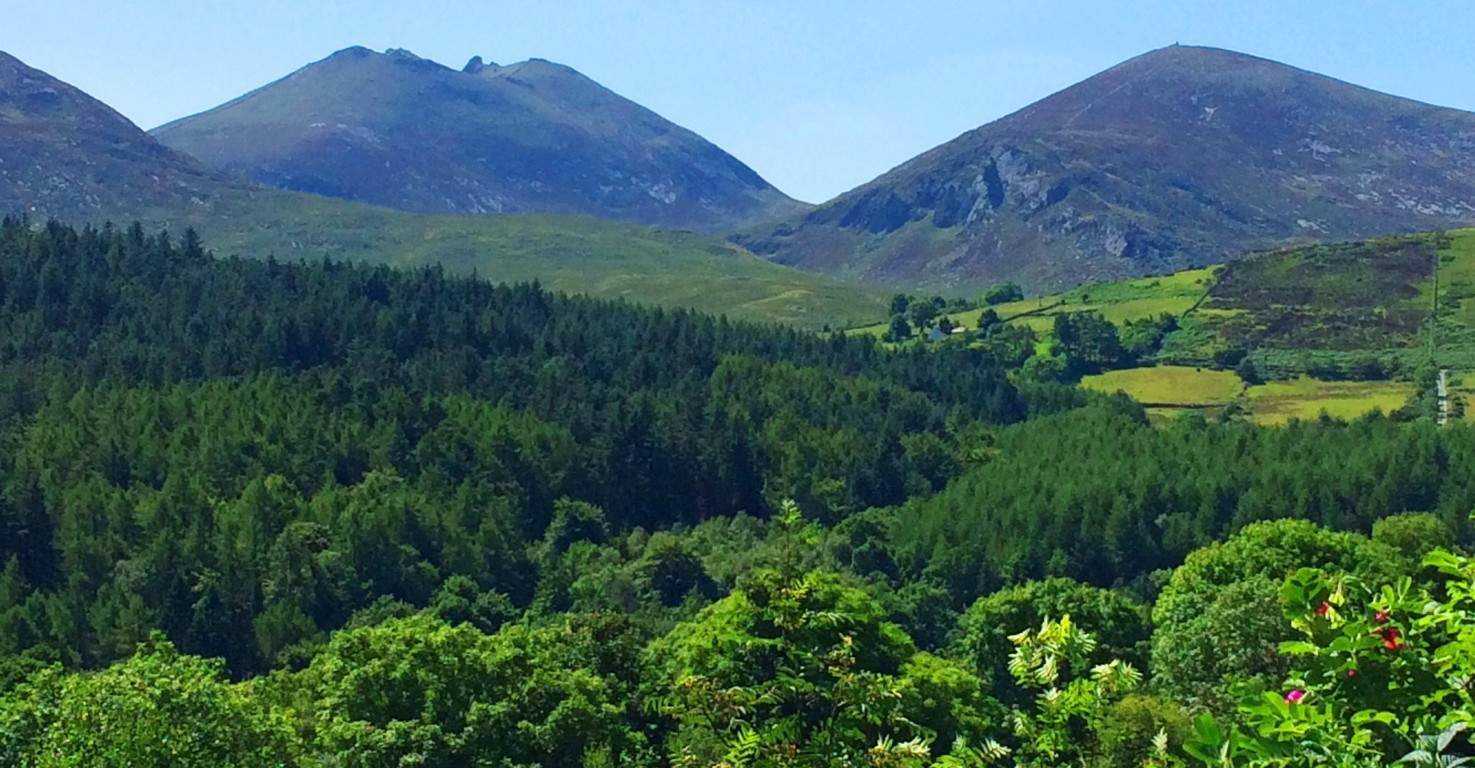 Location: Tollymore Forest/Bryansford Ireland; Newcastle
Location: Tollymore Forest/Bryansford Ireland; Newcastle
Note: Here is the now infamous Tollymore forest, the gorgeous setting chosen for much of the first epic season of Game of Thrones. The elevated peak directly behind the vivid pine glades is Croob Mountain, mingled with the greater Mourne Mountain Range. In real-time it is not hard to see why Tollymore was chosen by HBO as the back-drop for its mystical, Celtic/Medieval imaginary masterpiece.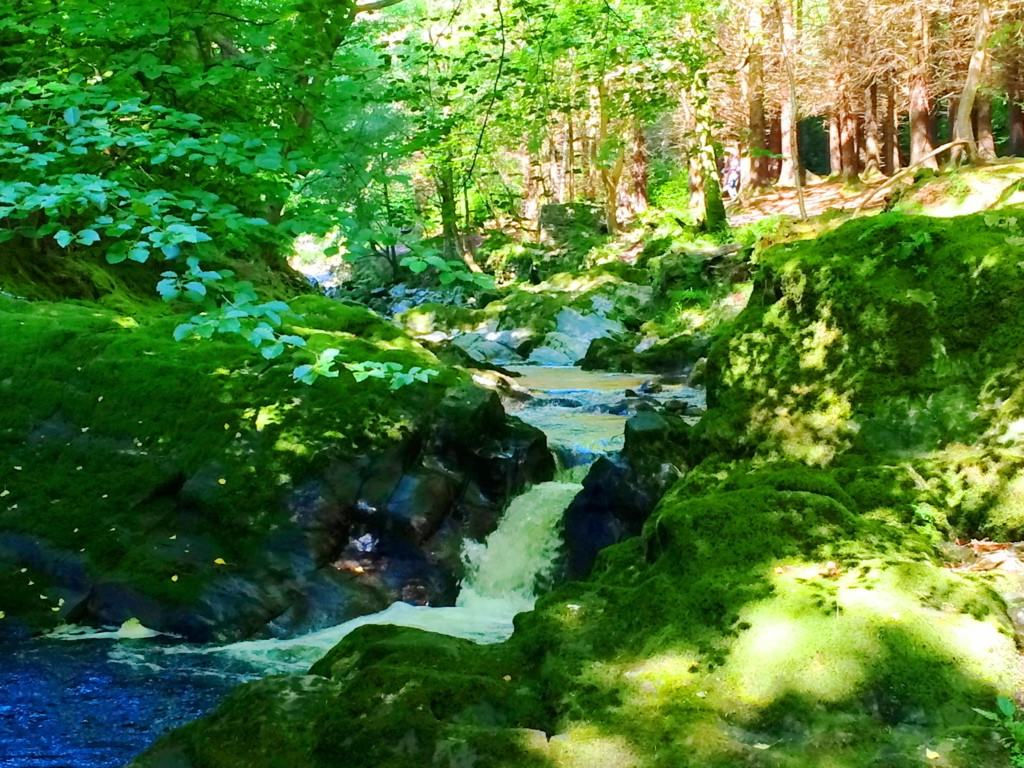 The glowing moss on the stones and tress indicate a pristine, ancient, and untouched aspect to the forest. Older places have this moss, which if touched by human hand, will not grow otherwise. It is everywhere in Tollymore, creating the feeling that one has stepped through a window into the way things once were. Several streams and rivers run through the woods, filled with glades of Oak, Beech, and even ancient Redwood. The stones within the streams reveal signs of equally ancient engineering, with directional layouts to influence the flow of water, or contain it in leveled pools with crafted rock faces.
The glowing moss on the stones and tress indicate a pristine, ancient, and untouched aspect to the forest. Older places have this moss, which if touched by human hand, will not grow otherwise. It is everywhere in Tollymore, creating the feeling that one has stepped through a window into the way things once were. Several streams and rivers run through the woods, filled with glades of Oak, Beech, and even ancient Redwood. The stones within the streams reveal signs of equally ancient engineering, with directional layouts to influence the flow of water, or contain it in leveled pools with crafted rock faces. I was able to identify several focal points where the rock had been hewn into a funnel, or spout, which is an amazing feat of controlling/pacing the active elements in the landscape. Again, the moss along the stones of these streams is luminary, especially in the sunlight, like something out of hallowed fairy tales.
I was able to identify several focal points where the rock had been hewn into a funnel, or spout, which is an amazing feat of controlling/pacing the active elements in the landscape. Again, the moss along the stones of these streams is luminary, especially in the sunlight, like something out of hallowed fairy tales. More significant anthropology exists in Tollymore, of classic rock fixtures, also found in the deep woods of New England. To our modern eyes they look like “walls”, but a closer look reveals that they were not built as “walls”. The location of these ‘aligned rocks’ are most often from one peak to the next. Animals are in no way contained by these aligned rocks. They must have had some other purpose, if not just to define the space, but more to connect zones, like a cord of some kind. The stone alignments at Tollymore were inundated with mossy overgrowth, giving it the engaging and magical look that Celtic trails exude.
More significant anthropology exists in Tollymore, of classic rock fixtures, also found in the deep woods of New England. To our modern eyes they look like “walls”, but a closer look reveals that they were not built as “walls”. The location of these ‘aligned rocks’ are most often from one peak to the next. Animals are in no way contained by these aligned rocks. They must have had some other purpose, if not just to define the space, but more to connect zones, like a cord of some kind. The stone alignments at Tollymore were inundated with mossy overgrowth, giving it the engaging and magical look that Celtic trails exude.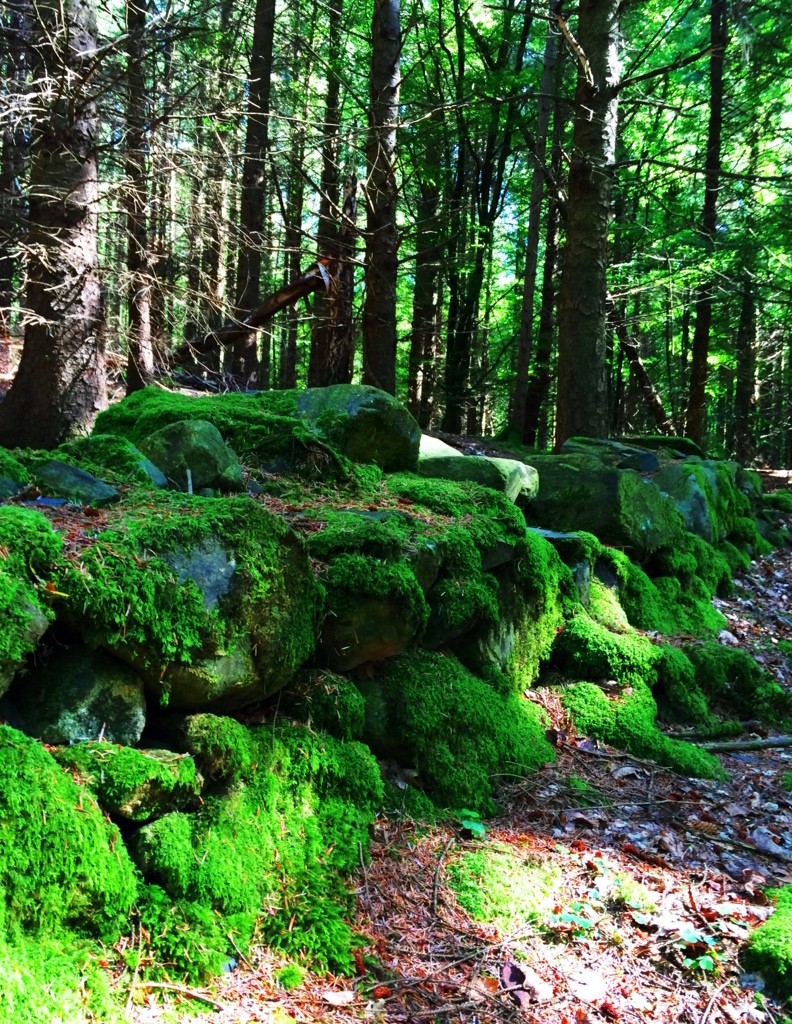 Other glades hosting taller Oaks and dry beds of grass were speckled with the captivating Fairy Foxglove. These violet towers stand guard to some of the most enchanted zones in the forest. Tollymore is absolutely worth a visit. The trails are clear and wide, running along the streams or into the mountain; it’s a Celtic daydream.
Other glades hosting taller Oaks and dry beds of grass were speckled with the captivating Fairy Foxglove. These violet towers stand guard to some of the most enchanted zones in the forest. Tollymore is absolutely worth a visit. The trails are clear and wide, running along the streams or into the mountain; it’s a Celtic daydream.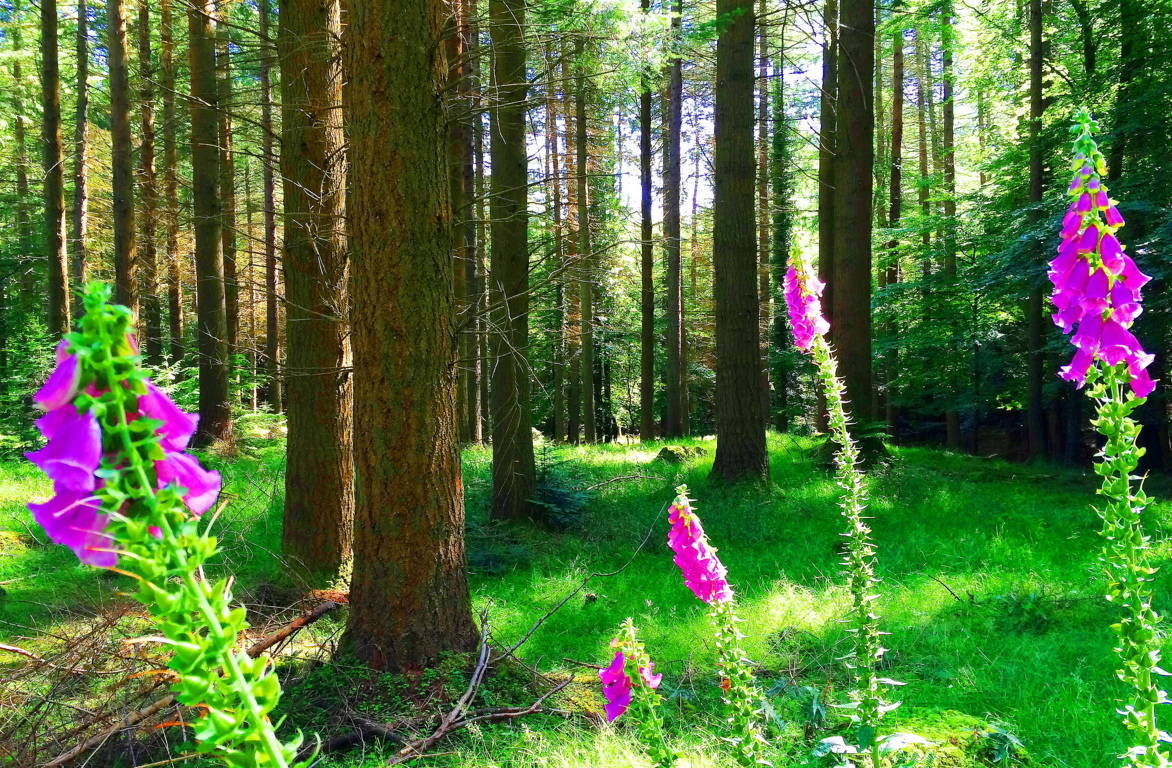
Mount Errigal/Donegal, Ireland
 Location: Mount Errigal/Donegal Ireland
Location: Mount Errigal/Donegal Ireland
Elevation: 2,464 feet
Note: The climbing of Mount Errigal is a truly beautiful and rustic challenge, with as dramatic a peak as any in the world, if not all of Ireland. Although Errigal is a ‘small mountain’ by international standards, it’s presence is absolutely dominant, blasting out of the rocky Glenveagh Mountain range.
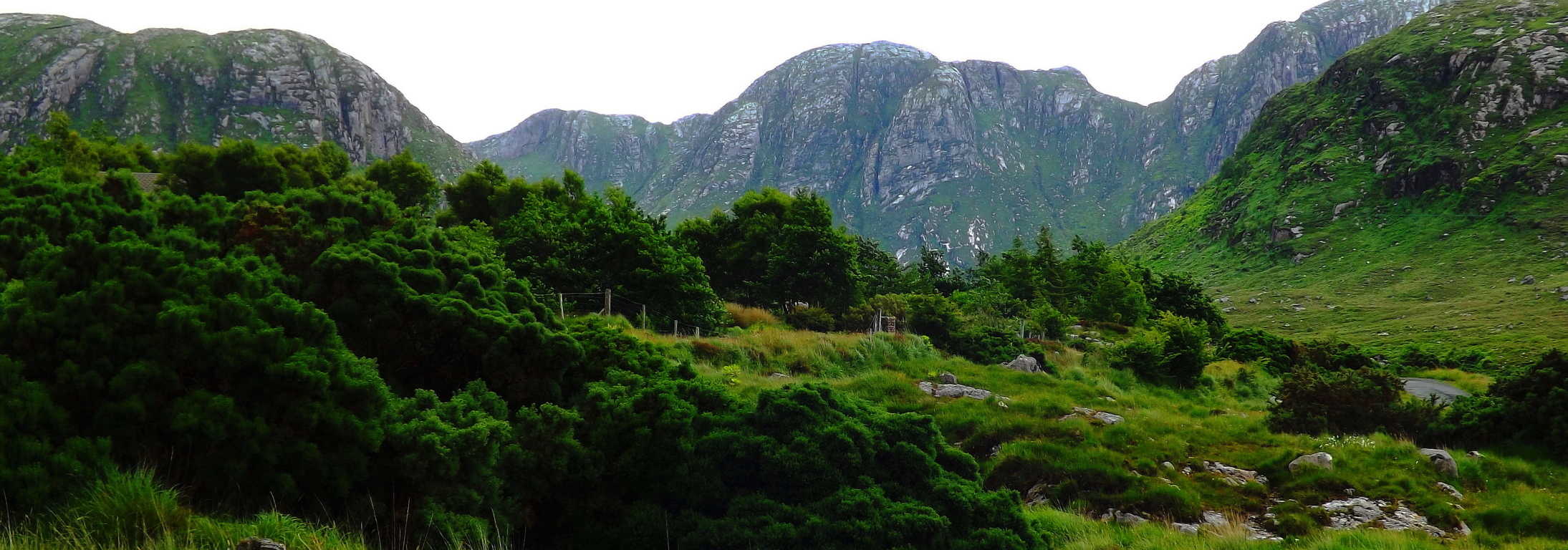 The granite stones of Errigal are so numerous that from a distance the mountain seems snow-covered, in July. The most utilized approach on the eastern face of the mountain has no crafted trail; one must traverse the same elements of watery rushes and mud at the base of the mountain as the ancient Celtic tribes had done for thousands of years. Working your way along the stream that carves its way through the rock, a climber must reach the beginning of the granite trail that winds to the summit. There are a few anthropologically significant stones that are without any doubt engineered, aligning to Mount Muckish to the north, along with other peaks to the north west.
The granite stones of Errigal are so numerous that from a distance the mountain seems snow-covered, in July. The most utilized approach on the eastern face of the mountain has no crafted trail; one must traverse the same elements of watery rushes and mud at the base of the mountain as the ancient Celtic tribes had done for thousands of years. Working your way along the stream that carves its way through the rock, a climber must reach the beginning of the granite trail that winds to the summit. There are a few anthropologically significant stones that are without any doubt engineered, aligning to Mount Muckish to the north, along with other peaks to the north west.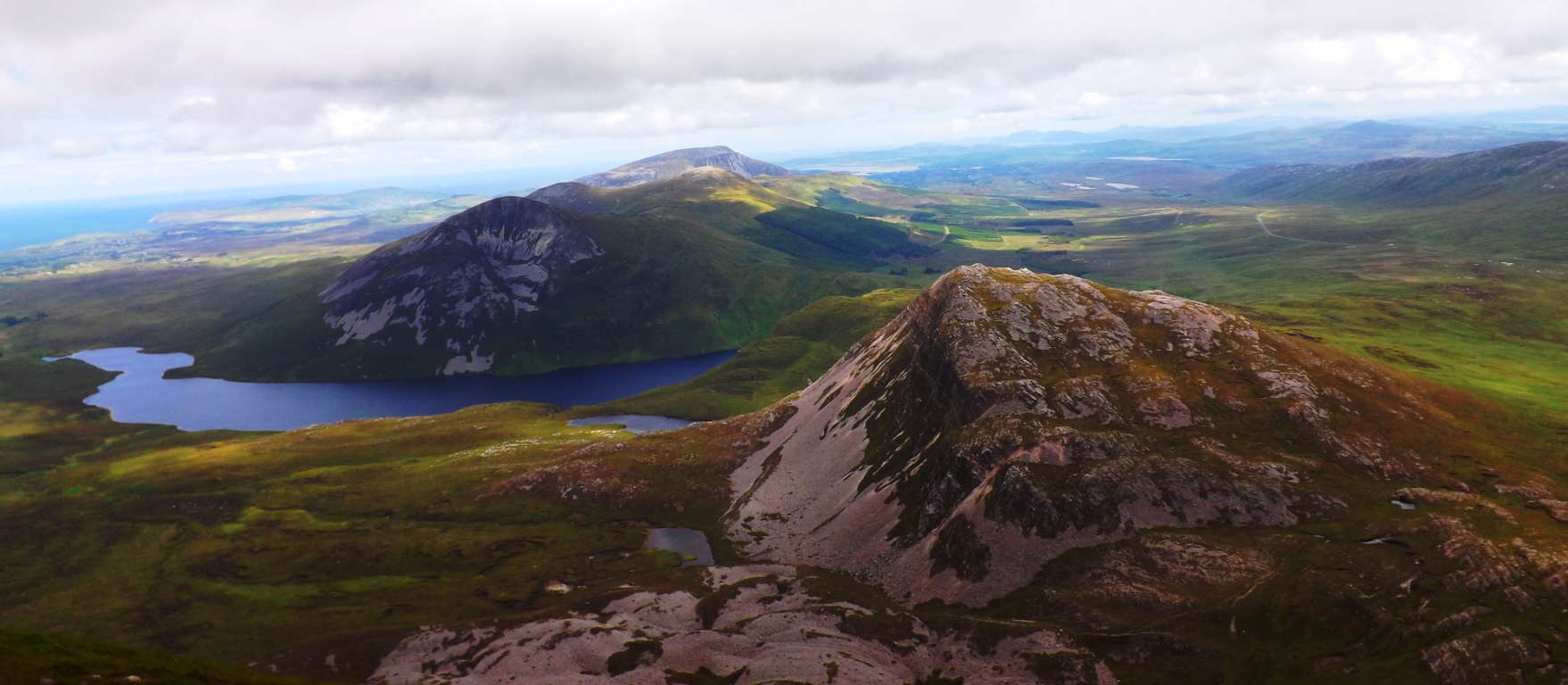 Similar non-arbitrary stones like this one below, cut to align to peaks in the distance, can be found, for example, on Monument Mountain over 2000 miles away on the North American continent in Massachusetts, and is referenced on this site.
Similar non-arbitrary stones like this one below, cut to align to peaks in the distance, can be found, for example, on Monument Mountain over 2000 miles away on the North American continent in Massachusetts, and is referenced on this site.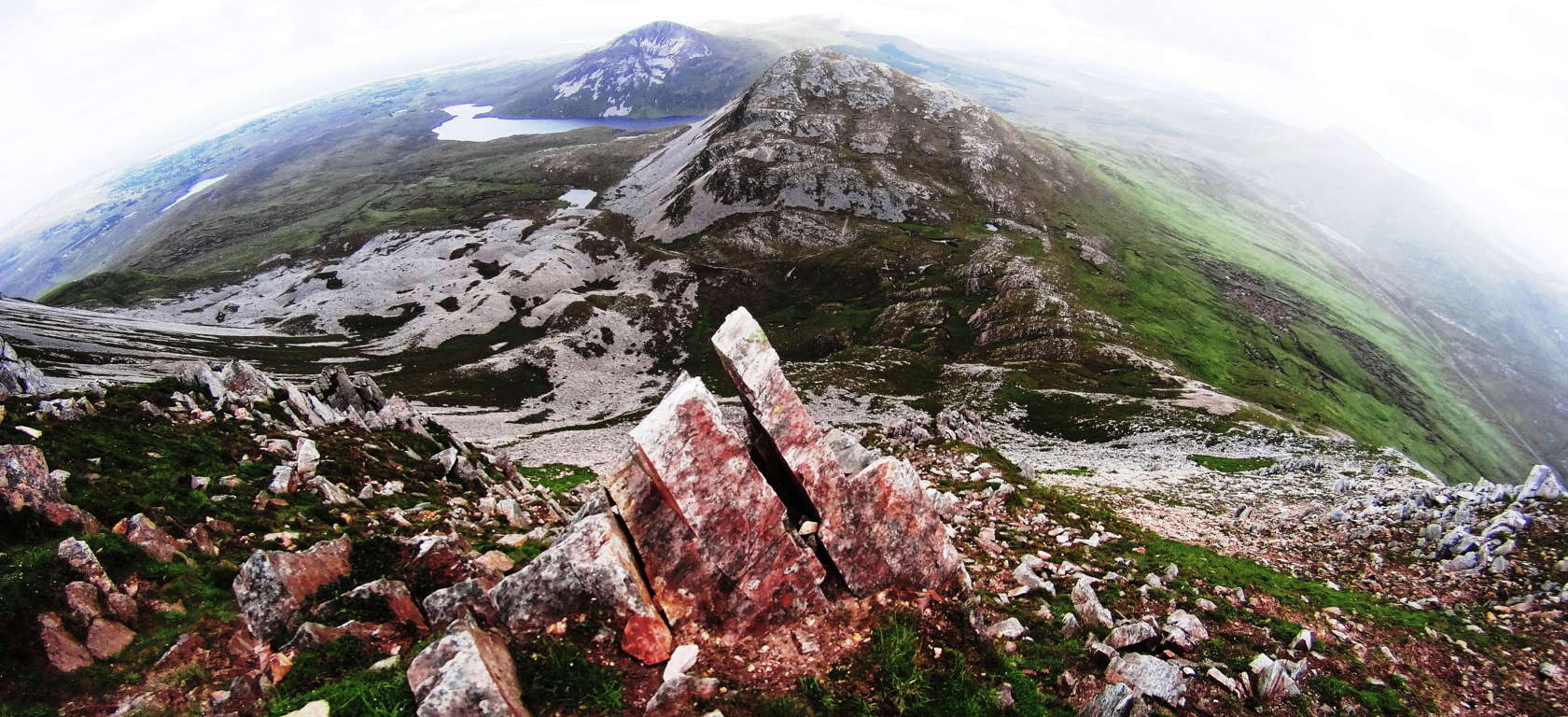
It is clear that in the first era of cultural interaction with the landscape, perhaps 10,000 years ago, or more, a culture existed which was capable of cutting stones to lend significance to certain vantage points on the mountains, connecting the peaks of each range, like the stars of astronomical sets. The Mourne Range, south of Belfast, is a prime example of this peak-to-peak stone alignment and configuring as well. The peak at Errigal is breathtaking; Celtic peaks have a beauty all their own that is distinct due to the lack of tree’s in the landscape, bringing forth an unobstructed vision of the valleys and ranges beyond. The peak at Errigal is without a doubt one of the single finest examples of the Celtic summit one could hope to find.
The peak at Errigal is without a doubt one of the single finest examples of the Celtic summit one could hope to find.
Glenveagh National Park
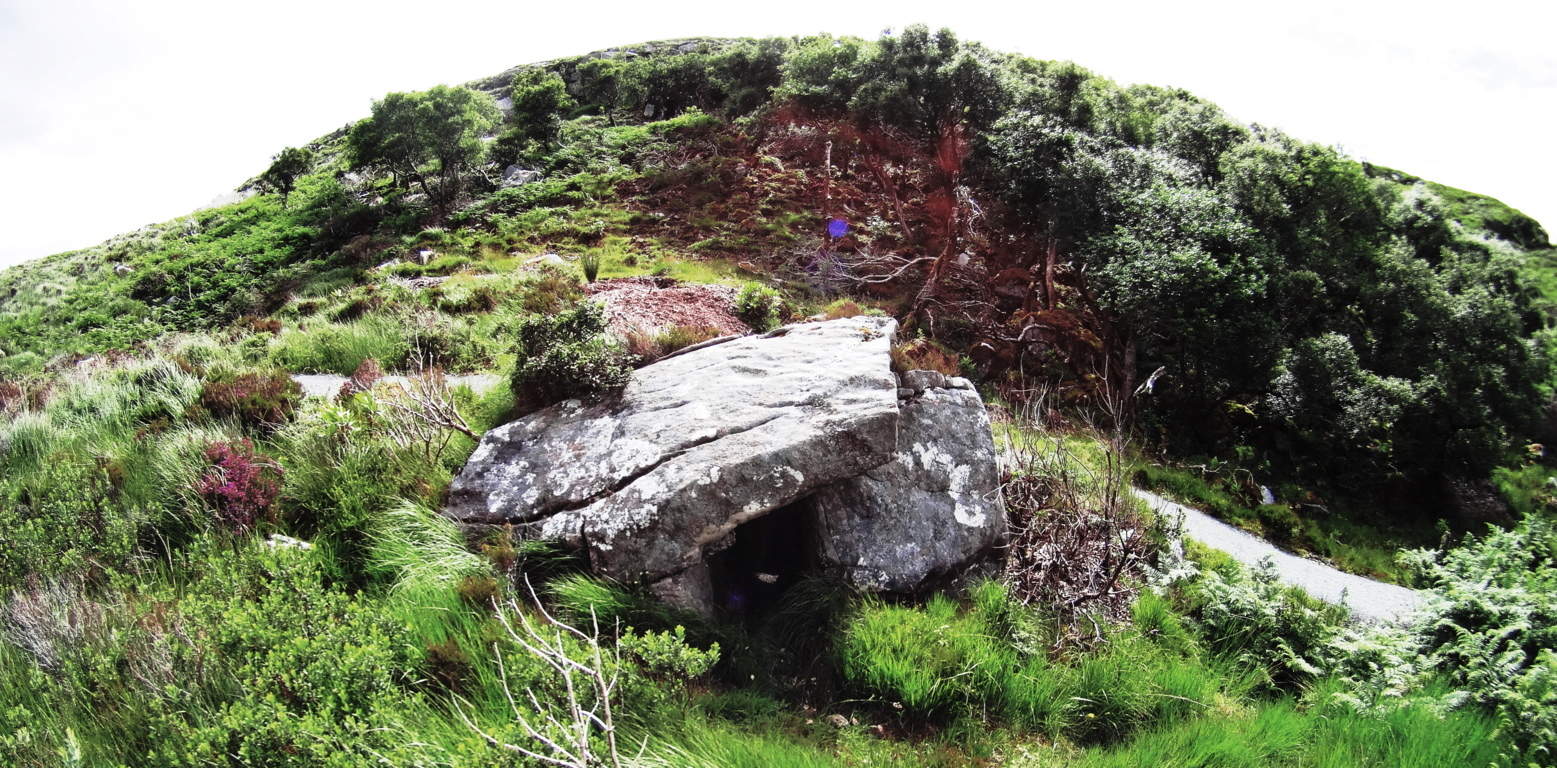 Location: Glenveagh National Park/Donegal/ Ireland
Location: Glenveagh National Park/Donegal/ Ireland
Elevation: 450 feet/Glenveagh Castle, elevated view trail
Scale: Capstone weight 1.5 tons
Note: The Glenveagh Mountains are the classic Celtic range for any trailblazer. Glenveagh Castle sits beside the lake below, supporting trails that run both along the water and above the castle grounds.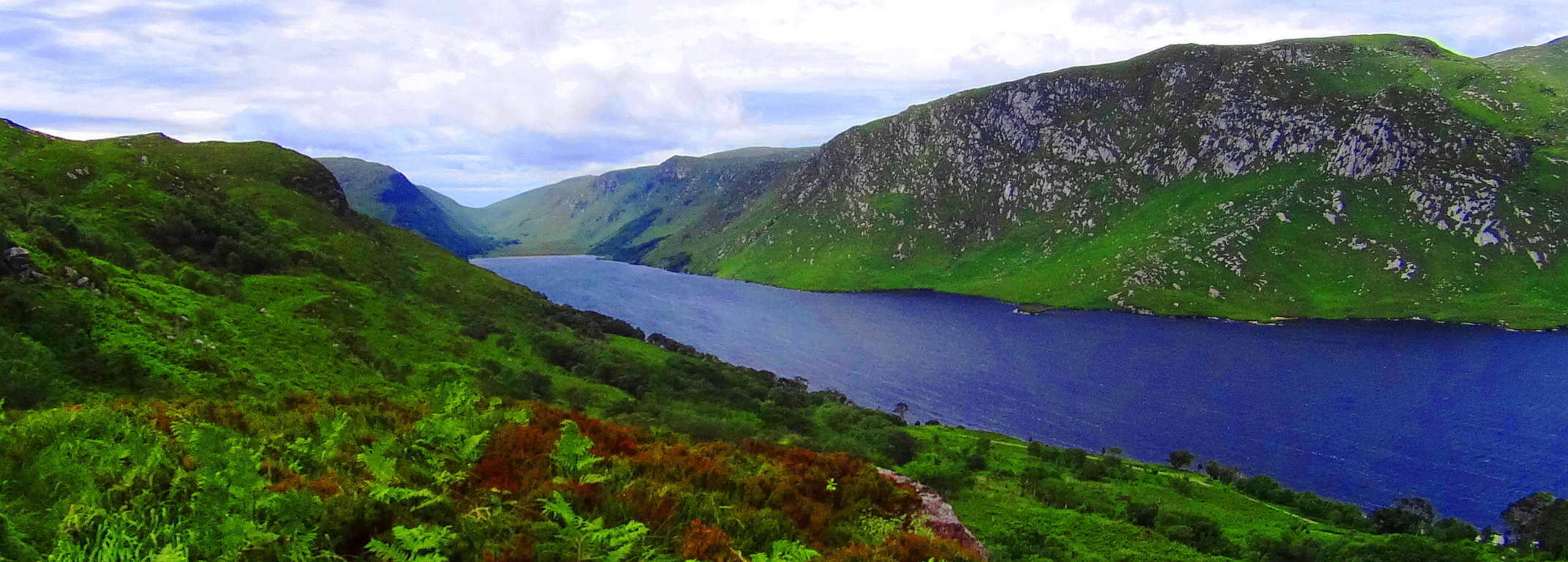 Tucked into the exact center of the elevated gully high above the castle is a small but distinct wedge tomb, complete with a classically slanted capstone and clearly squared entrance way. Many engineered megaliths share the distinct pattern of being located just behind a fantastic peak, out of the wind, most likely where a fire may be concealed from the dangers of the valley beyond; And the valley beyond is truly a site to behold. Another feature that distinguishes arbitrary looking caves from Wedge Tombs is that they are often centrally aligned with the exact mid-line of the mountain facade behind, as you can see from the premier image above. From the top of the mountain looking straight down to the center below is the Wedge Tomb’s location. In terms of the overall space it creates a type of ‘clarity’, rather clutter, to introducing an intrinsic symmetries into the landscape that will comfort those occupy it, and objectify any unaware intruders. Along the Glenveagh Castle Trails there are massive stones that are clearly cut with precision, most likely designating the area as “occupied” by whoever put them there so many thousands of years ago.
Tucked into the exact center of the elevated gully high above the castle is a small but distinct wedge tomb, complete with a classically slanted capstone and clearly squared entrance way. Many engineered megaliths share the distinct pattern of being located just behind a fantastic peak, out of the wind, most likely where a fire may be concealed from the dangers of the valley beyond; And the valley beyond is truly a site to behold. Another feature that distinguishes arbitrary looking caves from Wedge Tombs is that they are often centrally aligned with the exact mid-line of the mountain facade behind, as you can see from the premier image above. From the top of the mountain looking straight down to the center below is the Wedge Tomb’s location. In terms of the overall space it creates a type of ‘clarity’, rather clutter, to introducing an intrinsic symmetries into the landscape that will comfort those occupy it, and objectify any unaware intruders. Along the Glenveagh Castle Trails there are massive stones that are clearly cut with precision, most likely designating the area as “occupied” by whoever put them there so many thousands of years ago.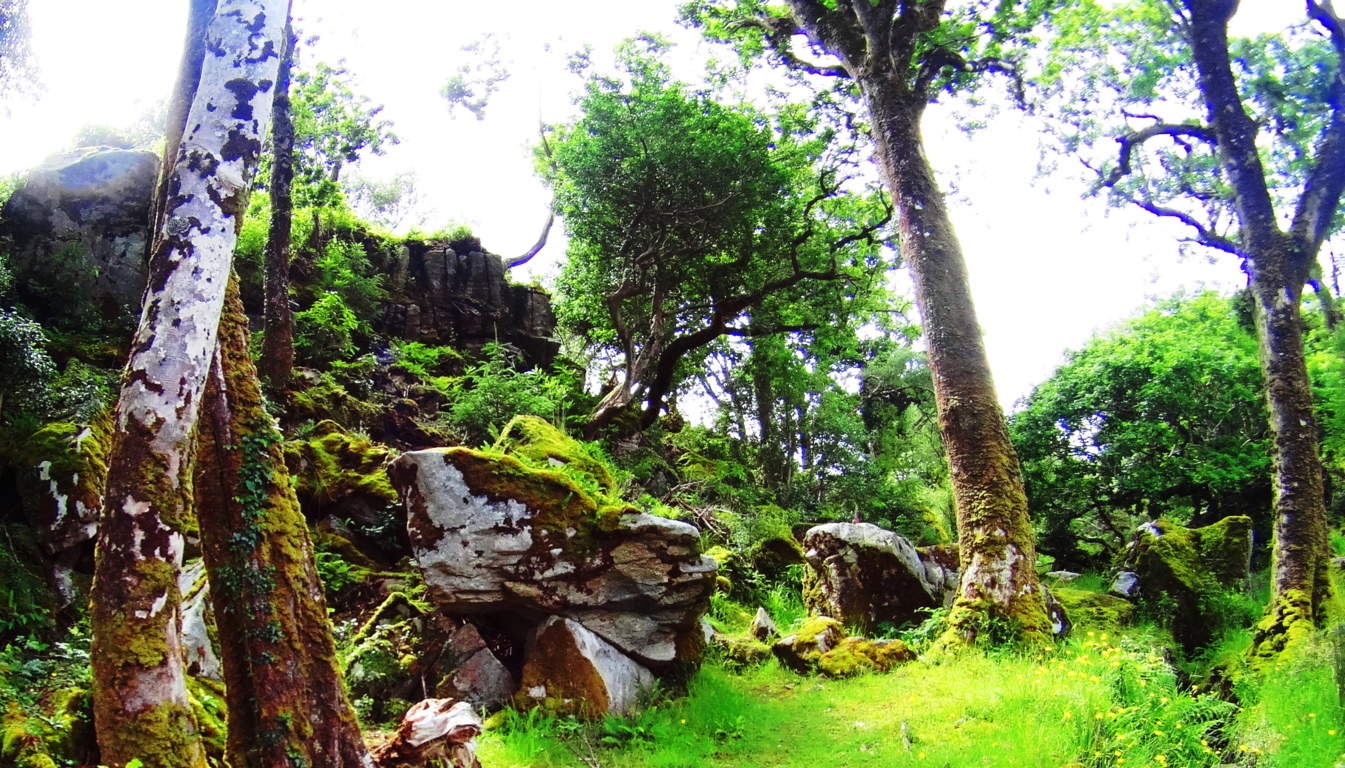 This particular standing stone is cut on one side to create a smooth ‘face’. It stands roughly seven feet high, and 2.5 feet in width, weighing perhaps 3 tons. It is located about a half mile below the Dolmen along a perfectly picturesque waterline. This is also a common theme found in sites from Ireland, England, and America: megaliths placed specifically to call attention to the area as occupied, like corners of a small kingdom. Other clearly engineered works are cut into the cliffs above, complete with right angles and squared free-sitting boulders/slabs. Anthropologists who have taken the time to investigate the patterns of sites where Dolmen are discovered will acknowledge these common themes of strategic location in reference to the Sun, elevated vantages, centrality, and clear ‘signature works’ of stone designating and possessing the area. Those who dismiss the accumulated logic of consistent dynamic evidence with the increasingly crude idea of ‘glacial displacement’ as being responsible for these sacred zones are defending an agenda that limits our understanding of History in general.
This particular standing stone is cut on one side to create a smooth ‘face’. It stands roughly seven feet high, and 2.5 feet in width, weighing perhaps 3 tons. It is located about a half mile below the Dolmen along a perfectly picturesque waterline. This is also a common theme found in sites from Ireland, England, and America: megaliths placed specifically to call attention to the area as occupied, like corners of a small kingdom. Other clearly engineered works are cut into the cliffs above, complete with right angles and squared free-sitting boulders/slabs. Anthropologists who have taken the time to investigate the patterns of sites where Dolmen are discovered will acknowledge these common themes of strategic location in reference to the Sun, elevated vantages, centrality, and clear ‘signature works’ of stone designating and possessing the area. Those who dismiss the accumulated logic of consistent dynamic evidence with the increasingly crude idea of ‘glacial displacement’ as being responsible for these sacred zones are defending an agenda that limits our understanding of History in general. Why is it so hard to even discuss the possibility of a Pre-Native/Pre-Celtic civilization that precedes tribal-human communities? In the Book of Samuel of The Old Testament King David was ordained by God to lead his tribe in battle against the Philistines, who were described as a tribe of giants. The Philistines claimed to be descended from an even more ancient tribe of giants called the Nephilim, referenced in Genesis 6, who were semi-divine, related to angels that fell to Earth and copulated with the first humans in the earliest period of cultural History.
Why is it so hard to even discuss the possibility of a Pre-Native/Pre-Celtic civilization that precedes tribal-human communities? In the Book of Samuel of The Old Testament King David was ordained by God to lead his tribe in battle against the Philistines, who were described as a tribe of giants. The Philistines claimed to be descended from an even more ancient tribe of giants called the Nephilim, referenced in Genesis 6, who were semi-divine, related to angels that fell to Earth and copulated with the first humans in the earliest period of cultural History.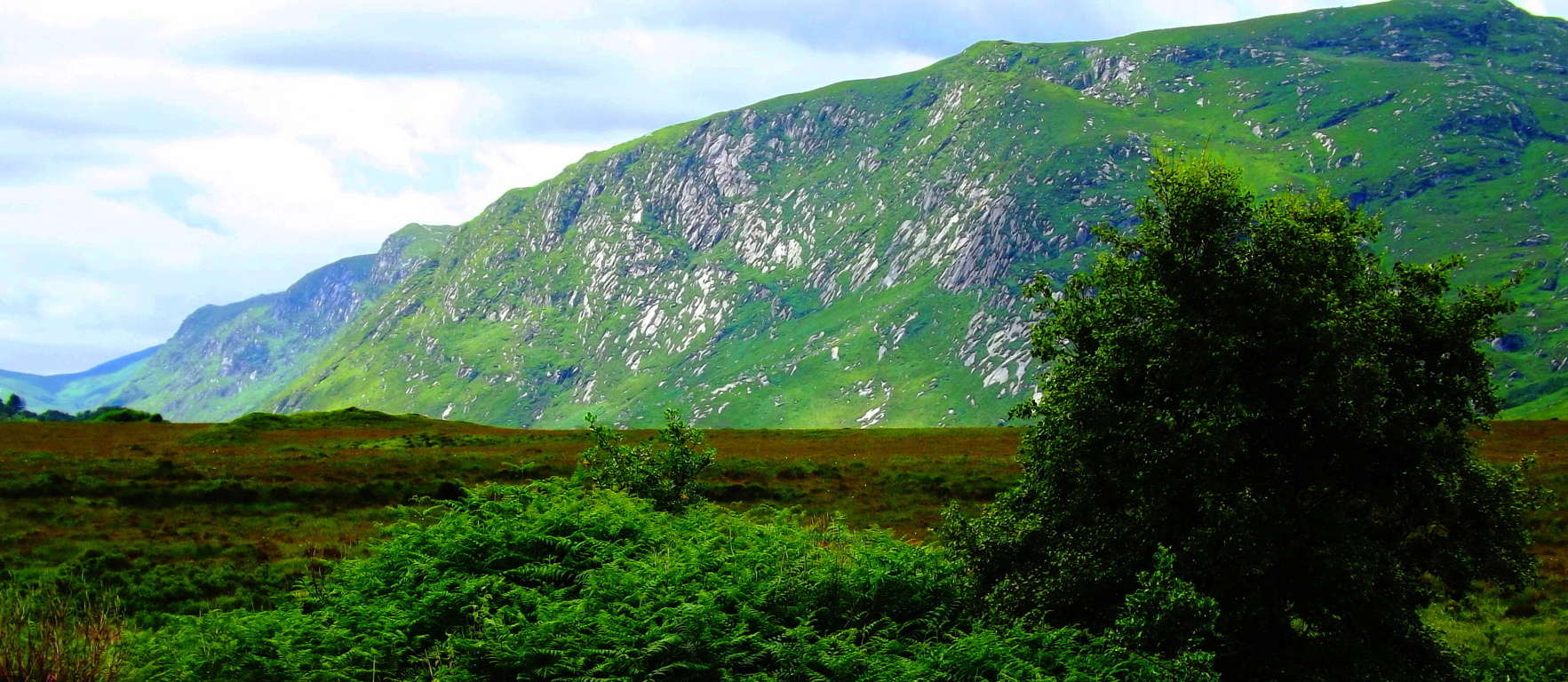 The Mayans did not claim to have built the oldest megalithic sites in South America, but said angels came from the sky and did it before they arrived, and Dolmens can be found outside of Israel to this day. Why is Postmodern culture pushing commercialized popular science as fact when the anthropology tells a very different story? Walk the trails and see for yourself.
The Mayans did not claim to have built the oldest megalithic sites in South America, but said angels came from the sky and did it before they arrived, and Dolmens can be found outside of Israel to this day. Why is Postmodern culture pushing commercialized popular science as fact when the anthropology tells a very different story? Walk the trails and see for yourself.
The Saltee Islands
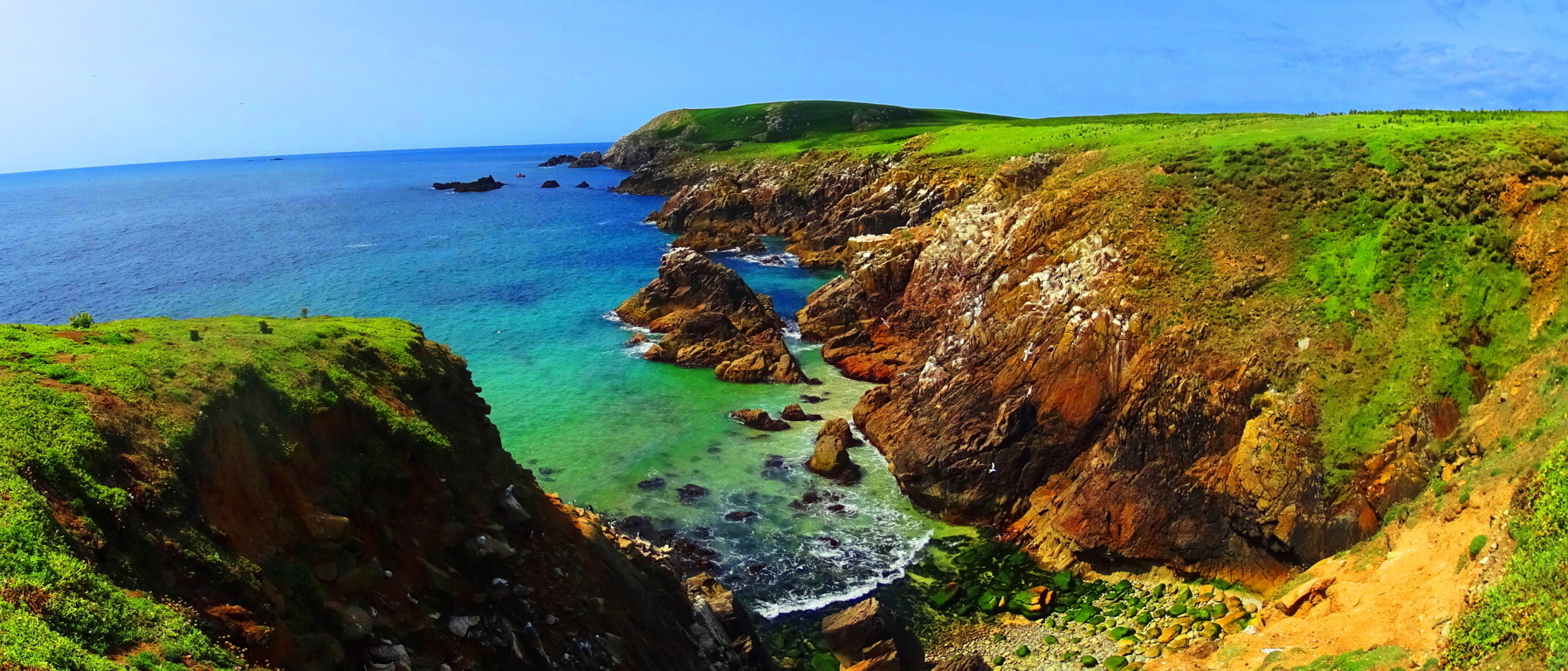 Location: Saltee Islands, Ireland
Location: Saltee Islands, Ireland
Note: The Saltee Islands hiking experience is like a dream. Take the boat ride from Kilmore Bay to land on the beach of a small Kingdom. The Saltee Islands are literally a kingdom owned by a single family dating back to medieval times, and they frequent the Island conversing gladly with hikers on the beach. Trails wind along dramatic gold and green cliffs, flowing with wildflowers and surreal rusty orange moss growing over the stones. The minor bays are filled with Puffin’s and Gull’s that glide over rolling waves and glowing boulders. It is one of the rare places that hiking barefoot is made possible by the cushioning and total softness of the terrain. Signs of ancient anthropology exist in the massive boulders along active dramatic ledges. There is a modern throne cut into the rock in a place that I believe once had a much more ancient fixture meant to be sat in. A colonial standing-stone inscribed with some of the history of this truly mystical, beautiful place is just beyond this high seat.
Gaulstown Dolmen
Scale: Capstone 6 tons
Note: The Gaulstown Dolmen is the “Mercedes Benz of Dolmens”, located in a hidden glade on a beautiful hill, southwest of Waterford, Ireland. Even the iconographic Poulnabrone Dolmen, several hundred miles away in The Burren, pales in comparison to this structure. The Capstone is 6 tons, balanced on five minor slabs. It is only a brief walk from the back-road to enter the glade where it sits. Locally this hill is known as “Hags Hill” where a magic-weaving witch once dwelt away from town. Also known as a “portal tomb” this megalithic masterpiece has stood for over 5000 years! It’s streamline look, with a frontal aerodynamic point on the Capstone, reveals an incredible sense of style, along with wonderful crafting, and engineering. How exactly this was achieved is not yet known. This is a truly magical and enchanted place, and absolutely sacred. I shared this experience with my family, and was easily one of the best days of my life. This is a must see for hikers, anthropologists, and photographers alike.
Standing Stone/Salt Hill, Galway
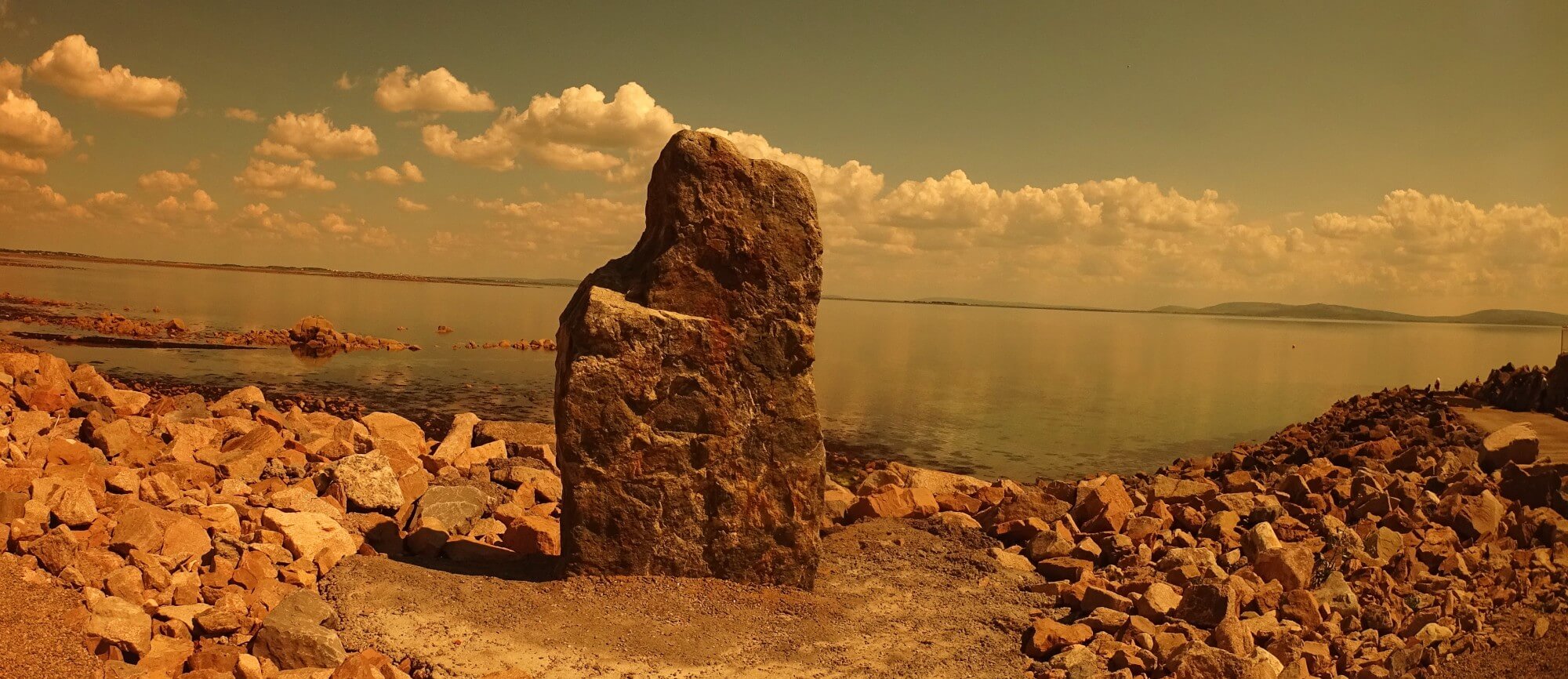 Location: Salt Hill Beach Galway
Location: Salt Hill Beach Galway
Scale: 7 feet height, 2.5 feet length, 8 inches width, 700 pounds weight.
Elevation: Sea level.
Note: This Stone in Galway is simply beautiful. Standing Stones by their very nature are cinematic, and what this conveys is that Celts practiced the original forms of cinematic sense. This was a great moment of understanding for me.
